

17 Best Catamarans for Sailing Around the World
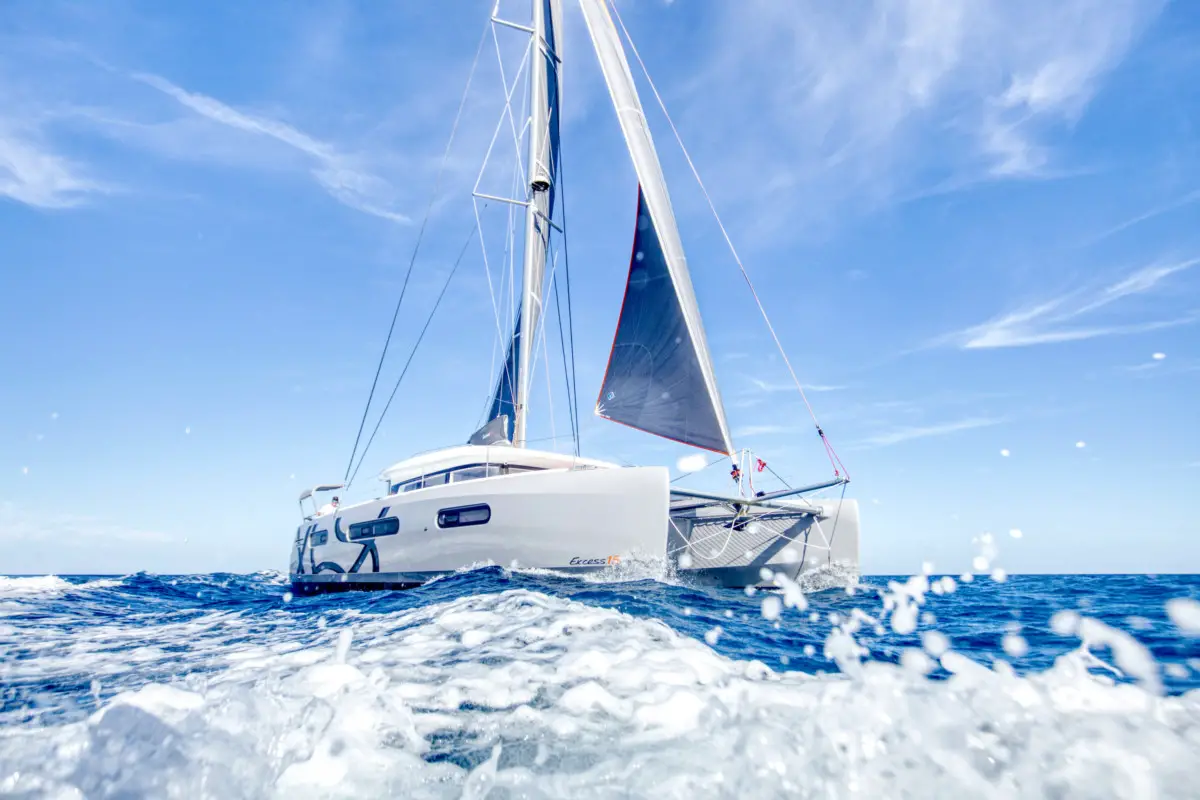
As an Amazon Associate, we earn from qualifying purchases. We may also earn commissions if you purchase products from other retailers after clicking on a link from our site.
Catamarans are quickly outstripping single-hull boats for long-distance journeys. They are more stable and comfortable , and some can travel more than 200 miles in a day. In today’s article, I have put together a complete (well almost) list of some of the best catamarans for circumnavigating the planet; the question is, which one is best for you?
The best catamarans for sailing around the world include:
- The Fountaine Pajot Ipanema 58
These cats focus on speed, safety, and comfort for longer journeys.
This article will show you the seventeen best catamarans for long journeys, and why they’re the best. You’ll also learn some great tips on what to look for in a Catamaran and how to save money by buying a used catamaran. Let this list be a jumping-off point for your future research!
Pro-tip; here are the actual costs of maintaining a cat and here are considerations on how to circumnavigate .
Table of Contents
The Best Catamarans for Sailing Around the World
A catamaran is a double-hulled boat with a deck or cabin area in between (bluewater cat definition in this article ). The double hull design means that the boat rocks less, sits higher on the water, uses less fuel to sail, and can be sailed in shallower waters than a single-hulled boat without worrying about grounding.
Catamarans come in a variety of sizes and can be sail-powered or motor-powered and range from single-person sailing boats to family-sized yachts. Every catamaran design is different, and the twin-hull shape offers many ways to customize the layout of a ship.
Each boat on this list is a larger catamaran (+40ft, more on size here ), so if you’re going to sail around the world, you want lots of space for provisions and rest.
Of course, there are tons of technical specs for each of these boats, but I’m going to focus on the overall features of each of these catamarans, what makes them stand out, and why they would each be an excellent choice for a transatlantic journey.
Antares 44i
The Antares 44i is an excellent option for sailing around the world and was explicitly designed for long-distance cruising. It performs well in any weather conditions, can be sailed easily by two people, and you’ll be able to sail long distances and live in comfort.
Although it can be easily sailed by a crew of two I believe that a true bluewater cat should be set up for single-handed sailing, more on that in another article .
This catamaran features a stateroom on each hull and a forward cabin with plenty of storage space. The living and entertainment features include a flatscreen tv and a high-end deck speaker system.
With this model, Antares dedicates itself to high-quality boats with optimal rigging and engine configurations.
Atlantic 42
Atlantic is no longer building this catamaran, but there are usually a few pre-owned boats on the market. You can also get it made custom if you love the design, but be prepared to spend more money on a custom boat (custom boat also gets custom problems ;)).
The Atlantic 42 is slightly smaller than some of the other catamarans on this list but is a seaworthy vessel. 42 ft is what most sailors I interview ( in this article ) said was the smallest cat to safely cross big oceans. It is also a decent size to counter the risk of capsizing (more on that here ).
It has a forward cockpit and pilothouse, which gives the owner a better use of space and makes the boat easier to navigate. With single-handed capability, one person can sail it easily and let the rest of the crew relax.
One of the best-praised aspects of the Atlantic 42 is its galley, more extensive than most 42-footers (12.8-meter) can offer.
One of the few 50 footers (15.24 meters) that can be sailed by just one person (many would of course disagree on this).
The Catana 50 is a catamaran worthy of an overseas journey. Its size adds to its stability on the open waters and its ability to sail straight through the choppy ocean and windy conditions.
The Catana is also incredibly spacious on the inside, with substantial cabins and showers. The biggest downside to the Catana 50 is its price, as it’s much more expensive than most of its competitors.
Catana also holds up well against some of the fastest cruising cats out there, here’s a list of the fastest cruisers if you are interested in that.
However, if you can find a gently-used Catana 50, you can rest assured that this boat will last!
The Dolphin 42 is unique because of the use of daggerboards instead of fixed keels. This upgrade means that the boat has some pretty decent upwind performance while at the same time being faster downwind.
Centerboards and daggerboards offer some interesting downsides compared to mini keels. This is an interesting discussion and I suggest you read another one of my articles if you want to deepen your knowledge a little.
These catamarans are some of the lightest on the market. Not many Dolphins were made, so they are relatively hard to find. However, if you want a small, lightweight boat capable of going great distances, the Dolphin 42 is an excellent choice.
Fountaine Pajot Belize 43
The Fountaine Pajot Belize is another well-built cruising yacht. Its core is made of foam instead of balsa, which reduces the risk of structural damage due to a rotten core in case of water intrusion.
The design of Belize offers many options for customizability, with large open spaces and a combined saloon, navigation, and dinette area.
There are two styles of Belize catamarans for sleeping quarters. You can either purchase a boat with an entire primary suite on one hull or one with two cabins in each hull. The first option is great if you are sailing the world alone and not expecting many guests, as it increases the storage capacity.
Understanding what factors to consider when getting a cat can be hard, there are just so many of them (such as the daggerboard discussion above), I have tried to compile some of the most important in this article .
The boat also has wraparound windows to increase the sense of space in the galley.
Fountaine Pajot Lucia 40
Fountaine Pajot is one of the best sailboat manufacturers existing today, as their boats are well made and highly versatile. The Lucia 40 is no exception – it’s a smaller boat but has a lot of room for moving around and on-board living.
The living area is remarkably spacious on this catamaran for its size.
The galley and lounge easily accommodate 6+people. The Lucia 40 doesn’t disappoint when it comes to sailing either, as the narrow hulls slice through choppy waters with ease.
Most catamarans today are built to withstand rough weather but that doesn’t matter as much if the crew isn’t up for the task, I firmly believe that the most important thing a boat should consist of, is knowledge. Therefore taking online courses ( two free here ) or reading books ( my favorites here ) is imperative.
Gemini 105M
Gemini’s boats have been on the market for years and are solidly built for cruising. This boat is one of the most popular ever made, I personally would consider something different for offshore cruising, but since it has such a good reputation, I felt I had to add it to the list.
If you want to understand why I am hesitant to take this boat around the world, I recommend you read my article: What are trampolines on a catamaran?
The Gunboat 62 is a great catamaran and set the standards for the rest of the impressive Gunboat lineup. It’s sleek and spacious while being robust and capable of transatlantic journeys. You can easily travel the world in a Gunboat 62 with several people and not feel cramped.
The yacht was made for speed and power and remains one of the fastest catamarans on the market, even rivaling the newer Gunboat models. GABO
Although the earlier models of the Gunboat 62 weren’t designed for a lot of cargo, you can still find space for everything you need without compromise.
Lagoon catamarans are known for their reliability and ease of use. If you are considering a catamaran for the first time and are unsure about the technicalities of sailing, a Lagoon boat is a great option.
The Lagoon 380 is probably the smallest cruiser on this list, which makes it better suited for solo or couple sailing.
When I go looking to buy something, whether it be a boat, campervan, or whatever, I create a checklist and classify all the things I want either by NEED or NICE to have.
I believe the Lagoon 380 to be sub-optimal for my NEEDS, even though it does check a lot of NICE boxes, there’s a step-by-step article on the NEED and NICE method here .
There are several cabin options available on the Lagoon 380, but if you’re sailing by yourself, you can settle for three cabins and a larger galley and living space. With a smaller cockpit and broader side decks, the Lagoon 380 packs a lot of practicality and ease of sailing into a more compact catamaran.
If you like the idea of a Lagoon boat but want a little more space, the Lagoon 42 is the upgraded version of the Lagoon 380. With all of the same benefits, it comes with more space for cabins or storage, making it one of the best-selling Lagoons of all time.
The Lagoon 42 is also a faster cruiser built for strength. While it’s not the fastest on the market, it works well in choppy waters and windy conditions, making it great for the beginning sailor to go on a more extended trip.
Many people have completed an around-the-world sail with this ship.
Although there is a flybridge version, I would recommend the “open” version due to several factors, some including increased windage and a higher boom. More on flybridges pros and cons here .
For stability, safety, and durability, you can’t beat the Lagoon 42.
The Leopard 45 performs better with less storage weight because of the relatively low bridge deck clearance. If the boat is fully loaded, you could experience some wave pounding. However, the cockpit is open and airy, with devices that block the sun and provide maximum comfort while sailing.
The Leopard 45 is an incredibly beautiful boat, and has a strong reputation for excellent build quality!
Leopard catamarans are one of my personal favorites, as such I have written an entire article about the brand, so if you want to understand its pros and cons then here is the link . Gabo
Designed in South Africa, it features a high rear arch for extra support and very smoothly connected decks. The galley is large and open, and most Leopards offer a four-cabin plan. If you are traveling with another person, this boat is an excellent option for you!
The Manta 42 is another classic catamaran that you can buy used (at a decent price), as it is an incredibly seaworthy vessel. While still in production, the Manta was one of the most popular catamarans on the market.
It is still in high demand amongst circumnavigators. Buying a used Manta 42 usually means that you inherit some of the previous owner’s boat upgrades!
The Manta 42 also made it to my list of the 9 safest catamarans on the market ( link ).
This blue water cat can be sailed by one or two people, making it ideal for liveaboard couples or long-distance shorthanded sailing. The galley is in the saloon ( instead of in one of the hulls ), making the cabins below more spacious and better equipped.
Overall, the Manta is well equipped for sailing around the world.
Nautitech 44
Nautitech is an excellent brand of the catamaran, with several different designs per boat. The Nautitech 44 has a unique feature, you can have it with two options for steering: twin wheels or a single wheel.
The Nautitech 44 also features a cockpit on the same level as the saloon. The door between the two is more convenient than a hatch and dramatically reduces the risk of water damage during rain pour.
This is also the same boat that aeroyacht president Gregor owns, he has offered some great insights into Nautitech in the book Catamarans (amazon link )
Outremer 45
Outremer is famous for being one of the fastest brands of catamarans on the market. If you need speed, the Outremer 45 might be the perfect choice for you. It has a top speed of 16 knots, which is higher than almost every other catamaran of its class.
While the Outremer 45 is known for speed, it doesn’t compromise on the quality of living.
You can settle into life on this boat with complete peace of mind. Even as a beginning sailor, the steering is simple and easy to use, and the autopilot is top of the line, so you’ll be able to sail across the ocean in an Outremer without issue.
Privilege Serie 5
A French-designed catamaran, the Privilege Serie 5 is one of the most comfortable 50-foot (15 m) yachts available. The unique cabin layout includes the master cabin in the boat’s center instead of in one of the hulls.
The Privilege Serie 5 is also incredibly easy to sail, despite its larger size.
The sails and controls lead to the helm, where the raised deck makes it easy to see all around the deck. If you want to cross the ocean with a full crew then the Privilege Serie 5 might be perfect for you!
Seawind 1000
The Seawind 1000 is the smallest boat on this list, measuring 33 feet (10 meters) long altogether. However, this doesn’t mean that it’s not livable. If you are sailing on your own or with a partner, there is more than enough space to live in the Seawind 1000, which includes the option of a centered cabin or two hull cabins.
Because it’s small, the Seawind 1000 is easy to handle. The mast and sails are all manufactured for extra stability and ease of use.
Overall, the Seawind 1000 is an excellent example of a simple, safe, and seaworthy catamaran.
Note: since this is a small catamaran it will also be more sensitive to heavy weather so trip-planning becomes even more important.
The Voyage 44 is one of the oldest cats on this list, having had its hay-day in the mid-1990s. However, this also means that a used Voyage 44 will be cheaper than a newer boat. If you can find a Voyage with previous responsible owners, you will inherit any upgrades and fixes that they’ve made on top of a very seaworthy boat.
The Voyage 44 has more storage and space than most cruisers of its size and is known for behaving very well in choppy waters.
This catamaran does its job well while providing adequate space for cooking, sleeping, and living aboard.
What To Look For in a Long-Distance Cruising Catamaran
If you are planning to sail around the world, you need to be very careful about which kind of catamaran you decide to use. Many of the things you want in a boat really comes down to personal preference, so be sure you know what design preferences you want before you start shopping!
Size and Payload
The most important thing to consider when buying a catamaran is how much space and cargo you need because the larger the boats are, the bigger the payload it can handle. Decide how long you want the ship to be and how much you’re taking with you.
It’s vital not to overload a catamaran, this will reduce performance and increase risk of unwanted behavior in heavy seas.
Cabin Placement
Most catamarans have options for a “Maestro” cabin placement, where one entire hull is the master suite, and the other cabins are located on the opposite hull.
Cockpit and Protection From The Weather
Is the cockpit on the boat you’re looking at covered or open? This can make a difference on the high seas, especially during rainy weather.
The size of the ship also can affect how many people you need as a crew. If you’re traveling by yourself or with one other person, you don’t want to buy a boat that needs a larger crew.
Buying Used?
If you don’t want to spend the money on a brand new catamaran, I don’t blame you. Several of the ships on this list are out of production and can only be found used. However, for circumnavigation, you do want a boat of high quality to keep you safe and dry until you make it to your destination.
When buying a suitably used catamaran, it’s essential to look at the refit history of the boat more than the year it was made. Catamarans are sturdy, and the general design has been the same for at least the past decade.
If you find a newer, larger, cheaper boat, you should look into its history.
Your best bet to save money while buying a catamaran will be to buy an older, probably smaller boat with an excellent refit history and no serious issues. It will still be an investment, and a sturdy used catamaran will serve you well.
Final Thoughts
No matter which catamaran you decide to buy for your journey, you’ll be able to sail safely and comfortably. Catamarans are great yachts for long-distance sailing, and the ships on this list are the best of the best. These brands are time-tested and ready to accompany you on an adventure around the world!
Here are Some of My Favorite Catamaran Cruising Resources
Thank you for reading this article. I hope you found it helpful as you hopefully start your sailing adventures. Here are some resources that I use as a sailor that I hope you’ll also find helpful. These are affiliate links, so if you do decide to use any of them, I’ll earn a commission. But in all honesty, these are the exact things that I use and recommend to everyone, even my own family. Sailboats: If you’re looking for the best boat to suit your needs, I would recommend a catamaran. If you’re interested, I can show you the differences between catamarans and other types of sailboats .
Books: For getting started, I really like Cruising catamarans made easy . It is actually a textbook from the American sailing association; it is used to get a cruising catamaran certification. There are some other great books, and I have compiled a list of books about cruising catamarans that you will find useful.
Communication: Being out on adventures, whether it be sailing or climbing mountains, good communications are essential to being safe. I recommend two things Google fi (incredibly simple cellular data all over the world) and Garmin inreach mini (for text and voice in remote areas without cell coverage)
Sailing courses: Online sailing courses are great for beginners starting out their sailing career; it’s an efficient way of learning the basics of navigation, throttle controls, and maritime safety. I suggest starting with two free courses from NauticEd .
To see all my most up-to-date recommendations, check out this resource that I made for you!
- Wikipedia: Catamaran
- Cruising World: A-Z Best Cruising Catamarans
- Dreamy Yacht Sales: Four Best Catamarans for New Buyers
- Atlantic Cruising: Good Cat/Bad Cat
- Yachting World: Catamaran Sailing Across the Atlantic
- Boat Affair: What is a Catamaran?
- Nautilus Sailing: Catamaran Sailing
Owner of CatamaranFreedom.com. A minimalist that has lived in a caravan in Sweden, 35ft Monohull in the Bahamas, and right now in his self-built Van. He just started the next adventure, to circumnavigate the world on a Catamaran!
3 thoughts on “ 17 Best Catamarans for Sailing Around the World ”
I like the efforts you have put in this, regards for all the great content.
Thanks Elisabeth I really appreciate the kind words 🙂
I appreciate you sharing this blog post. Thanks Again. Cool.
Leave a Reply Cancel reply
Your email address will not be published. Required fields are marked *
Save my name and email in this browser for the next time I comment.
Recent Posts
Must-Have Boat Gear for Catamaran Sailors!
Sailing is probably the most gear-intensive activity I've ever done; there are so many decisions to be made about what gear to buy now, for tomorrow, and what to definitely never buy. The gear on...
6 Best Trailerable Trimarans For Bluewater and Coastal Sailing
Having a boat costs a lot of money, even when you are not using it, marina fees, etc. And once it is in the water most sailors never go very far from their "home marina" and sailing will be somewhat...
10 Best Catamarans in 2024
We gave our Sailing writers one job: Find the best and most popular catamarans and review them.
Our review team always considers durability, price, quality, and value in their reviews.
A catamaran is a sailboat that has a multi-hull design. It gives it more stability because it’s wider and that creates more livable space for more people.
Read about the best multihull boats in this article and learn which one is best for your voyages.
The biggest advantages of a multihull are:
- Multihulls are usually faster than monohulls, especially on downwind runs, reaches and broad reaches. You can travel further per day and outrun inclement weather
- They are more stable than a monohull. Sailing flat definitely has its advantages
- It is less tiring sailing a multihull
- More space!
- For cruising the draft is less than a monohull which means you can go into shallower water safely
Top 5 Catamarans in 2024
All the catamarans we've tested.
Lagoon Catamarans
Where to buy:
Where to buy lagoon 40:.
Lagoon has always enjoyed a sweet spot in the 38 to 40-foot catamaran market. The Lagoon 380 became one of the most popular cats ever, with nearly 1,000 hulls being produced over a 20-year run. The L400 and L39 attempted to tweak that popular design, but neither caught on to the extent the 380 did.
The new Lagoon 40 is turning heads for many reasons. The Lagoon 380 is officially off the Lagoon website, so it might finally be time for the torch to be handed to a new cat. And the 40 has just the right mix of modern features, small size, and affordability that many cruisers and families seek.
Here’s a go-anywhere boat that looks good, sails easily, and keeps you comfortable.
- Naval Architects: Van Peteghem-Lauriot Prevost (VPLP Design)
- Built: CNB Yards, Bordeaux, France
- Exterior Designer: Patrick le Quément
- Interior Designer: Nauta Design
- Length Overall: 11.74 m/ 38 feet, 6 inches
- Beam: 6.76 m/ 22 feet, 2 inches
- Draft: 1.35 m/ 4 feet, 5 inches
- Mast Clearance: 18.42 m/ 60 feet, 5 inches
- Sail Area: 80 square meters/ 861 square feet
- Engines: 2 x 29 hp Yanmar 3YM30 (upgradable to 45 hp)
- Fuel: 2 x 200 liters/ 56 gallons
- Fresh Water: 300 liters/ 76 gallons
- CE Certifications: A10/B12/C16/D20
Things we like:
Things we don't like:.
Leopard Catamarans
Where to buy Leopard 42:
The Leopard 42 is the company’s replacement for the 40. It integrates several design elements that were proven on the new 50 and 45-foot models, including an upper lounge area atop the coachroof. The design also has the unique forward salon door that opens for direct access to the foredeck and a sun pad lounging area.
Like all Leopard catamarans, the 42 is not only comfortable to stay on, but it’s also fun to sail. All sailing controls lead to the compact helm. Everything can be handled from this one control station. The full-roach main and overlapping genoa provide plenty of power, and optional electric winches make sail handling a snap.
The Leopard 42 share company in the market for 42-foot cats with some very attractive boats–the Lagoon 42, the Bali 4.2, and the FP Astrea, to name a few.
- Year Launched: 2021 (There have been several designs to carry the "Leopard 42" name)
- Designer: Alex Simonis
- Builder: Robertson and Caine, Cape Town, South Africa
- Length Overall: 41 feet, 7 inches/12.67 meters
- Beam: 23 feet, 1 inch/7.04 meters
- Draft: 4 feet, 7 inches/1.4 meters
- Mast Height: 67 feet, 10 inches/20.68 meters
- Power: 2x Yanmar 45 hp diesel engines
- Fuel: 158 gallons/600 liters
- Water: 174 gallons/660 liters
- Holding: 44 gallons/ 166 liters
- Upwind Total Sail Area: 1,217 square feet/113.1 square meters
Catamarans-Fountaine-Pajot.com
Fountain Pajot 80 Catamaran Superyacht
Where to buy fountain pajot 80 catamaran superyacht:.
Fountaine Pajot, one of the foremost builders of sailing catamarans, unveiled their biggest “ Super Catamaran ” ever: the Thira 80.
The release comes on the tail of an ever-increasing trend in the catamaran market—the bigger-the- better era . With Sunreef, Lagoon, and Gunboat all making boats in the 70 to 80-foot range, these companies clearly see a market for the catamaran superyacht.
Boats this size are easily comparable to a motor yacht of more than 125 feet long. The very wide beam provides cavernous interiors for more livable space. And they have plenty of room for the toys of the trade—tenders, jet skis, paddleboards, and more.
While sailing is always preferable, its 175 to 300-horsepower engines are more than capable of moving it on calm days. And it’s hard to beat the ride and comfort of a catamaran at sea, with its extra stability and lack of heeling in the wind.
So, is bigger really better? Let’s dive in and tour the new Fountaine Pajot 80 and all that she has to offer.
- Length: 78.7 feet/23.98 meters
- Beam: 36.4 feet/11.09 meters
- Draft: 6.9 feet/2.10 meters
- Displacement: 66.0 tons (approximate)
- Sail area Main: 2,153 sqft/200 sqm Genoa 1,507 sqft/140 sqm
- Power options: 2x 175-hp, 270-hp, or 300-hp
Kinetic Catamarans
Kinetic KC54
Where to buy kinetic kc54:.
The Kinetic may be fresh on the scene of the Super Cats but it is on the cutting edge of the finest fast craft in terms of performance and latest technology while also having features, impeccable finishes and the amenities of stylish cruising.
This has been awarded the Cruising World Best Large Multihull 50ft and Above Boat of the Year 2022 as well as the Special Recognition Award – for Overall Excellence 2022 by Sailing Magazine. Said Gerry Douglas of Sailing Magazine: ‘This was the Tesla of sailboats…in terms of design and execution and technology, it hit all three of those marks. This boat is built without compromise’.
These catamarans are all-carbon construction, an aggressively lightweight construction and set up for short-handed sailing. Mast is coachroof mounted and there are options for centreboards and daggerboard. There are three steering stations (two outside aft on each hull, one inside right behind the working cockpit) to suit weather conditions and personal preference.
- Length: 54 ft 2 in
- Beam: 27 ft 7 in
- Draft: Dagger Boards down 10.2 ft
- Standard Rudder up 4.5 ft
- Capacity: 3 or 4 double berths (6-8 persons)
- Motor: 2 x Yanmar 4JH80 - 80hp Diesel SD80
- Fuel Capacity: 264 gal
- Mast height: 85.3 ft (above water)
- Mainsail area: 1,102 sqft
- Fresh Water tank: 264 gal
Xquisite Yachts
Xquisite X5 Plus
Where to buy xquisite x5 plus:.
2022 saw the Xquisite X5 named the Cruising World magazine’s Best Cruising Catamaran of the year – yet again (it won the Best Multihull over 50ft award in 2017) .
As Ed Sherman said: ‘There are 40,000 man-hours invested in this boat. And you can see it.’ To the bolts that are torqued to the 2 weeks spent with each new owner training them on systems – this is a strong product, well designed by Rudolf Jonker and built by Phoenix Marine incorporating all of Tamas Hamor’s ideas and experience. This really is a well thought out 53 ft cruising sailboat and is another South African-built catamaran loaded with important details, not only the visible ones.
The goal for Xquisite is to supply fully equipped catamarans for long-term live-aboard cruising with comprehensive lifetime service assistance for the owners.
There are so many features from the gutters to catch rain-water on the coachroof to footswitches for the electric winches at the helm. Solid handrails all around the deck for maximum security to the below deck running-rigging network! In terms of the design and construction much thought has gone into weight saving. There is no faulting the systems installations.
All lines lead to the helm through below deck channels that are easily accessible with winches well thought out. The helm is slightly raised to port under a bimini with a sliding fully-battened canvas roof that is easily raised and lowered. There is an overall ambiance of space and light in the berths and galley which opens onto the cockpit.
Sailing performance was impressive with its powerful rig – however a heavy, low-slung cruising cat with keels instead of boards to get to your destination in comfort and style.
See our complete list of the best catamarans here .
- Length: 53 ft
- Beam: 26 ft 2in
- Draft: 4 ft 4’
- Capacity: 3 double berths (6 persons)
- Motor: 2 x 80 HP Yanmar
- Fuel Capacity: 208 gal
- Mast height: 78 ft 7’ (above waterline)
- Mainsail area: 1,130 sqft
- Fresh Water tank: 227 gal
McConaghy Boats
McConaghy MC60
Where to buy mcconaghy mc60:.
The MC60 is the fastest and most luxurious flybridge catamaran. ‘Think next-gen fighter jet meets a New York style luxury loft apartment.’
McConagy boats was founded by John McConaghy in 1967 and in 2000 Mark Evans & Jono Morris embraced the opportunity to take over the country. They partnered with Tiger Group Investments and have grown from strength to strength – building the world’s fastest racing yachts , submarines, components for Formula One racing and developing solutions for architects, scientists and others. They have a proven track record on complex composite products which are lightweight, corrosion resistant, have design flexibility, durability and high strength.
In the MC60, designed and engineered with safety as priority, this performance sailing meets stylish living with only finest wood veneers and luxurious materials throughout – the wide saloon which offers a versatile but spacious living area, large windows and retractable glass doors aft, a galley well positioned best suited to socialising. The attention is to detail and innovation even in the storage solutions so that living space is maximised with semi-customisation of interiors too. She is the perfect blend of sophistication and high tech.
Sailing is in utmost luxury, effortlessly and safely due to meticulous control of weight. She is much lighter than other similar length cats and can approach cruising speeds close to true wind. A professional crew are required. For sailing there are dual helm positions on the streamlined flybridge for best sight lines. The precise hull forms achieve optimum strength to weight ratio with careful use of carbon which means that under full sail she points upwind like a monohull. The M60 has push button centerboards that raise on impact automatically – certainly one of the safest offshore performance catamarans .
- Length: 60 ft 04 in
- Beam: 28 ft 2 in
- Draft: 4 ft 7 in with centreboards up
- 12 ft 4 in with centreboards down
- Capacity: 2 double berths & 1 - 2 twin (6 - 8 persons)
- Motor: 2 x 57 HP
- Fuel Capacity: 123.19 gal
- Mast height: 92.85 ft
- Mainsail area: 2,034 sqft
- Fresh Water tank: 123.19 gal
Sunreef Yachts
Where to buy Sunreef 80:
Winner in the 2019 Oceanway China Yachts Award, the 2019 Yacht and Aviation Awards and claiming Best of Show Award in the 2020 Miami International Boat Show this mighty fine catamaran justly deserves all and more. It is an all-round sailing leisure yacht for exclusive getaways, charter and transocean adventures and is set up for professional crew.
The Sunreef is built in Poland under management of Founder and CEO Francis Lapp who has been producing large vessels from 50-165 ft since 2002 and knows well what semi-custom cruising is all about.
The Sunreef 80 fuses contemporary design with its layout flowing easily one into another area in ultimate luxury. Custom finishes ensure that you have found your ultimate catamaran – the vast central lounging space with panoramic view opens both onto the bow and cockpit. The cleverly designed bridge deck and superstructure facilitates the superior comfort onboard.
The spacious 54sqm flybridge is the epitome of leisure – a jacuzzi, wet bar, barbecue and large sunpads with the main boom well clear overhead ! It also houses all the navigation. Plenty of relaxation and pleasure space.
The sail controls are well laid out for the twin helms with carbon masts built by Sunreef themselves. The rig is built for power on this well equipped and luxury sailing vessel.
The tall bow has a fine entry aimed at reducing drag while the hulls are designed to reduce drag too while having super volume to accommodate the luxurious cabins are airy and impeccable in style. The master cabin is located midships starboard and is an opulent space while the other cabins each have queen sized beds, spacious en-suites and unquestionable privacy.
- Length: 80 ft
- Beam: 37 ft 7 in
- Draft: 7 ft 218 in
- Capacity: 4 - 5 double berths plus optional crew of 3 (8 - 10 persons plus crew max of 3)
- Motor: 2 x 280 HP John Deeres
- Fuel Capacity: 634.01 to 1585.03 gal
- Mast height: 2185 ft
- Mainsail area: 2152.78 sqft
- Fresh Water tank: 422.68 gal
HH Catamarans
HH50 cruiser
Where to buy hh50 cruiser:.
The HH50 is a performance cruiser for the blue water with simple to use but intelligent systems, carbon construction and to top it all luxurious and spacious interior. She offers to best of all worlds – easy to manage sailing vessel which is robustly built, fully equipped and stylishly comfortable for your adventure.
The sailing systems and deck layout are designed for short-handed sailing with dual helm stations each giving the helmsman total sail control from either side and having excellent visibility. The C daggerboards are curved and are fully retractable. Push button mainsheet and self-tacking jib are standard. Equal-to-Wind speed is normal, this is a performance sailing vessel.
The large saloon has a good sized galley and when at anchor the sail handling area converts easily to a comfortable forward facing seating area. The aft cockpit has an integrated wet bar and barbeque – perfect for al fresco entertaining or dining. Luxury queen size beds await in the cabins.
- Length: 51 ft 8 in
- Beam: 24 ft 41 in
- Draft: 5 ft 43 in Board down
- 10 ft 83 in Board up
- Capacity: 2 double berths and 1-2 single (4 - 6 persons)
- Motor: 2 x Yanmar 40HP
- Fuel Capacity: 131.98 gal
- Mast height: 75 ft 36 in
- Mainsail area: 873.28 sqft
- Fresh Water tank: 87.99 gal
Excess Catamarans
Where to buy Excess 11:
This gem earned the title of Cruising World’s Boat of the Year 2021 impressing the judges with its allocation of space all the while offering superior sailing performance. All at a great price.
Using compact space effectively – effectively and seamlessly assimilating working and social areas in a thoughtful, pleasant, workable and innovative way. This is a sure winner for the Excess 11.
The Excess 11 is one of the smallest catamarans as well as the only large-scale production boat of this size, with comfort, space and thrilling sailing. She is comfortable in her simplicity and light style. It is very capable for long passages and meets the needs for life on board, built on the experience of previous models and designs.
Even with her smaller size she offers comfort on deck with a large open cockpit and twin helm stations.
Complete Excess 11 standard features list please email via website
- Length: 37 ft 5 in
- Beam: 21 ft 7 in
- Draft: 3 ft 9 in
- Capacity: 3 - 4 double berths (6 - 8 persons)
- Motor: 2 x 29HP
- Fuel Capacity: 106 gal
- Mast height: 56 ft 8 in
- Mainsail area: 592 sqft
- Fresh Water tank: 79 gal
Bali Catamarans
BALI Catspace
Where to buy bali catspace:.
The BALI Catspace is the most successful catamaran in her class with the Catspace being the smallest of the BALI range, combining all the latest innovations in cruising. It was nominated for the Cruising World’s best boat of the year: Catamaran under 50 ft, 2022.
The Catspace was conceived by Olivier Poncin & designed by Lasta Design – combining all the latest innovations in cruising into a really neat vessel.
The sailing quality is not to be faulted for a catamaran of this size, the deck which is efficient for sailing allows smooth movement from the aft platform to the forward cockpit with lounge and sunbathing area. There is, in addition a full-comfort flybridge which has a safe relaxation area and a helm station which is designed for single/short handed use.
The 4 cabins each have private heads and the ability to open up the back end of the cats to create the indoor/outdoor platform is well planned and highly effective.
Complete Catspace standard features list
- Length: 40 ft 39 in
- Beam: 21 ft 59 in
- Draft: 3 ft 91 in Boards up
- Motor: 2 x 20HP up to 2 x 40HP
- Fuel Capacity: 107.78 gal
- Mast height: 58 ft 56 in
- Mainsail area: 1,087 sqft
- Fresh Water tank: 167 gal
Big ‘blue water’ Sailing
Blue water sailing refers to the open sea. Non-blue or pond sailing refers to inland waters and coastal areas.
The difference in specific design of a blue water or non-blue water vessel is for the ship captain’s visibility as well as based on the hazards of the area they are to be used. A bluewater (offshore) catamaran is designed for voyages in very rough seas. They are usually 40ft or longer, designed to be very stable, carry heavy loads and very safe. Ocean sailing has different dangers to coastal water with different challenges – sailing through storms, longer distances, more maneuvering space, night sailing – and more gear, better technology, skills and sturdier vessels are needed.
When sailing in confined waters it is important to have more reactive steerage, less maneuvering time, you do not need to store multiday provisions as you are more reliant on daytime sailing, do not need so much speed so have smaller sails and lower horsepower engines and perhaps the intention if for pleasure alone so one of the major considerations will be the layout of the vessel.
For most sailors the choice of size is between 40-50 feet which is manageable for 2 persons with lots of room to spread out and entertain or have friends on board and that is easy to dock both in terms of space and cost.
First questions to ask yourself
First up consider these 5 points before you decide on your multihull model, length and manufacturer.
Will you be using your sailing vessel for coastal or blue water adventures? What is your primary objective and then: is this for family pleasure or entertaining or Charter?
For sailing
Must it be suited for single-handed sailing? What proficiency of sailing do I have/need? Degree of technology required? Equipment required?
Functional Use
How many berths do I need? How much privacy? Elegance, comfort and style – what is required? Space for ‘toys’? If for charter or private use with crew – extra berths.
Your total budget must include the initial cost of the vessel plus survey, transport, upgrading of equipment, insurance, etc – there is a lot to consider. Would a second hand vessel be a consideration? What is the smallest I can go?
Annual Costs
What will my ongoing budget be for Insurance, berthing, maintenance, repairs, haul out fees, etc? This excludes any travel costs
Where do I want to berth my vessel? Or living aboard?
It is said that BOAT is an acronym for: Break Out Another Thousand!
Review of Our Favorite 15 Multihulls 2024
With cutting edge technology and the strive for sail performance this was no easy task – there are many deserving vessels who deserve to be in the Top Reviews such as Privilege 510, Outremer 51, Knysna 500SE and the St Francis 50. There are also other models by manufacturers we have selected that have proven themselves over the years that may be a better size for you.
Here’s our listing!
Related Reviews
Read full review
Final Thoughts
Multihull vessels have a lot of the potential for creature comforts that motor yachts have without the constant thrumming of the engines. But they still require a modicum or rudimentary understanding of sailing.
There’s also a bit of maintenance required, but this is something–like having kids–that you figure out along the way.
Another popular boating segment is the power catamaran. Like their sailing counterparts, power catamaran boats have great living space, but without the need to understand sailing principles. Either way, both multihull markets look to be growing in popularity over the next many years.
The resale market for multihull ships also looks promising, so getting one, trying it out for a couple of seasons and selling it again is a possibility without losing too much on the purchase price.
Before you sign the cheque….
So you’ve located some a catamaran for sale that looks promising. It’s one of the models on the list here and you’re wondering if its in the best shape relative to the price. Here’s what you do:
Take time out to go and view it in person. Book yourself an experience aboard and head over to your closest marina and speak to owners (this may well help you create your shortlist too). Consider these points before purchasing:
- Pre-book buyer’s sea trials for your shortlist
- Select the perfect sailing vessel for you (and if it’s for your family make sure they agree too!)
- Used – get a certified hull survey, safety comes first
- Get annual insurance quotes
- Calculate dockage – purchase or rent a slip or dock
- Calculate monthly upkeep and maintenance
- Calculate extra costs like navigational devices & fittings
- Draft your own checklist
- Draft & sign off sale & purchase contracts
- Draft & sign off a Memorandum of Agreement (MOA)
- Ensure you are satisfied 100%
- Execute payment and take transfer of ownership
- Register and insure your vessel
Check all necessary Stock is aboard – Sail away!
Pre-Departure Checklist
Some ideas for you –
- Always pre-check the weather and wind conditions prior to any excursion on the water
- Always know the tide table in your head, so you know what the ocean is doing at all times, incoming or outgoing tide, and what is the tidal range if you are in an ocean estuary or channel.
- Check you have fuel, water, food and all the basics before loading passengers aboard, and follow these easy steps to ensure safety is first at all times.
- Plan your upcoming voyage, does it feature high swells, rocky shores, and cold water
- Check Safety equipment, making sure you have enough life jackets for all sea-farers
- Check sails, sheets and lines. All sailing gear
- Check your engines – Open fuel lines, check oil and spark plugs
- Check fuel tank levels and have extra fuel aboard for an emergency
- Start the motor, make sure water is coming out to cool the motor
- Test both forward and reverse gears on the engine before guests board
- Check that you have a working and full battery communications radio, with all correct channels programmed, and that all the vessel lights and electrics are in working order
- Check for first aid kits, manual hand pump, paddles, lifejackets , additional lines, fresh drinking water and food for passengers plus some spare in case your voyage is longer than expected, necessary repair tools & kit and flags
- Strap any equipment and gear down safely before you start to motor
- If you have passengers boarding, ensure you give a proper safety briefing and point out where all the safety gear is on the vessel. Children should be included in the briefing and be secured properly before departure
Catamarans versus Trimarans
Trimarans have limited space in slimmer hull designs generally. This makes Catamarans with their comfortable open leisure space both above and below deck far preferred for leisure sailing.
On the plus side for Trimarans are their speed and seaworthiness.
How Safe are Multihull Boats at Sea?
Probably a close second in terms of questions asked. On a twin hull design the buoyancy is on the outer edges of the boat and their is greater stability and less rolling when drifting or trolling compared to a monohull.
Catamarans are safe in rough seas because of their wide stance which makes them stable with increased motion comfort and excess buoyancy due to lack of ballast. They are easy to maneuver and with high speeds that may help them outrun storms with skilled crew who know the vessel. A trimaran is the safest of multihulls with the 3 hulls, centering of its weight and anti-drift plan. The righting torque between a catamaran and trimaran is significantly different.
An important consideration is this – if your catamaran is anything longer than 45ft, unless specifically modified for single handed sailing, then it probably cannot be sailed alone. At some stage in your journey you may well have to sail alone – can it be done?
As Blue Water Sailing Vessels
Catamarans are more stable and fast and depending on conditions some can distance more than 200 miles in a day.
Cats usually sail faster than monohulls (standard) due to the weight of them and displacement, especially on a run or broad reach when the sails are perpendicular to the wind. There are many variables to consider.
Solo Sailing a Multihull
Most small and medium-sized cruising catamarans can be sailed single-handedly. The skill of the sailor with high tech equipment such as electric winches and powered sail control, layout (such as all lines to the cockpit, roller furling mainsail, autopilot, etc) and safety precautions make it an adventure not to be missed.
If your catamaran is longer than 45ft, unless specifically modified for single-handed sailing, you will not be able to safely sail it alone. Consider:
- What the minimum length of the vessel would suit your needs to handle on your own
- Layout planning is essential
- Space you need
- The bigger the boat means larger sails which will be harder to raise and repair
- The bigger the boat means more power and speed – be comfortable with your vessel
- Update your sailing skills
Finding the Right Size
It is a very personal choice but at the very least the advice would be to buy the smallest catamaran you think would meet your needs – this is because you have many other costs to consider and the bigger the vessel the more the costs of upkeep, dockage, space for crew.
A perfect size for blue water sailing (including around the world) is around 40 ft, small enough to be sailed by one person but big enough to provide safety and speed. The smallest size to consider to cross the ocean safely and in some comfort by consensus is around 30ft. Any smaller and you will possibly have the following problems as dealing with large seas the size of your vessel does count :
- A smaller vessel is always pitching and yawing and this impacts the crew negatively over a long period of time or in crisis situations
- Low bridge deck clearance due to the small size of the vessel
- when sailing upwind the waves are projected with speed and force into the decks understand (between the pontoons) creating bridge deck slamming. This vibration and noise impacts the crew and is very tiring – sailing downwind to prevent this may not be where you want to go
- Not having enough space for all the supplies and equipment needed for a long passage
- Alongside the problem of weight to be carried is the problem of distribution of this weight over the length of the vessel safely
Multihulls best for ponds, slow rivers and calm bodies of inland water benefit from having flat hulls to provide shallow draft with great deck space manufactured from aluminium or fibreglass. Make sure you take extra food and water and all safety supplies just in case of an emergency!
The question everyone wants to know – how much does it cost to live onboard?
There are many variables depending on your lifestyle, where you intend to cruise or berth and how much you want to travel aboard. A good estimate would be between US$2000-US$5000 per month for a family of 4, a little less for a couple/single person plus the maintenance cost of your boat which is on average 5-10% of the cost of the boat. The maintenance of your boat varies depending of equipment, age, condition and size.
What do I need to consider differently to live on-board rather than racing ?
Racing vessels are designed for speed and exhilaration and safe fun.
Living on-board requires space and comfort – space for storage, large-sized comfortable berths, living space, entertaining space, home-space! You need to know your long term goals and what your personal needs are – do you need a dedicated work area or desk space/permanent interconnectivity for work?
Generally cruising catamarans have wider hulls which give you more space as well as creating more drag which slows your boat down and is more costly on fuel.
Many used charter boats are seen as great purchases for living on-board, however make sure that they are suited for blue water sailing and not only for coastal water.
Here’s a list of the Top 15 best Multihulls reviewed in this article:
- Leopard Catamarans – 41 ft 7 in – Leopard 42
- Balance Yachts – 48 ft 26 in – Balance 482
- Kinetic Catamarans – 54 ft 2 in – Kinetic KC54
- Xquisite Yachts – 53 ft – Xquisite X5
- McConaughey – 60 ft 1 in – MC60
- Sunreef Yachts – 80 ft – Sunreef 80
- Leopard Catamarans – 50 ft 6 in – Leopard 50
- Voyage Yachts – 57 ft 42 in – Voyage 590
- Seawind – 52 ft 8 in – Seawind 1600
- HH Catamarans – 52 ft – HH50
- Fountaine Pajot – 39 ft 14 in – Isla 40
- Lagoon-Beneteau Group – 38 ft 5 in – Lagoon 40
- Excess Catamarans – 37 ft 2 in – Excess 11
- Maverick Yachts of SA – 44 ft – Maverick 440
- Chantier CATANA – 37 ft 5 in – Catspace
Frequently asked questions about Catamarans
This varies greatly, often defined used or new by the design, size, year and finish. Quality vessels are built to last and retain market-related value if undamaged.
On average a 45-foot catamaran can range from US$250,000-US$1,000,000.
The fully loaded Isla 40 costs around US$527,000. The Balance 42 sail away price fully cruise equipped is US$1,450,000 while the Kinetic 54’s price tag approaches US$3,000,000. The modern styled Sunreef 80 costs around $6.2 million.
We think that the Seawind 1600 is, for its size and quality, a superb priced performance product at US$900,000.
One of the major benefits for a cruising vessel is to be able to enter shallower seas – catamarans have a shallower draft than monohulls and therefore a great appeal to folk for whom this is a major consideration. Most lagoons are only 6-8 feet deep in the South Pacific. The Caribbean and other areas where you have reefs to navigate and shallow sandbanks to cross to enter overnight anchor stops draft is a very important consideration. Always remember to read your tide tables and swell.
A catamaran is lighter on the water and therefore takes less energy to move, however they have 2 engines which drives up fuel costs. They are more fuel-efficient on flat water (compared to equal horsepower and number of engines) but in heavy weather the monohull’s hull design causes less resistance and therefore higher efficiency.
With lighter weight and high buoyancy generally they have low water drag by comparison to the displacement of a monohull of the same length.
The trampoline serves many purposes – primarily to allow water to quickly pass through, allowing the bow to rise and so preventing the vessel from flipping and they are ideal for pleasure purposes.
To sail around the world the vessel needs to be equipped for offshore cruising and have a heavy load capacity.
The bigger Modern blue water cats are built with this in mind – supplies, crew, technology and gear.
A bigger boat has many advantages such as speed (not only to travel longer distance in shorter time but also to outrun potential bad weather) and comfort space, space for crew and friends, storage space for supplies and fun equipment, etc.
It is important to balance price against comforts, maintenance and repair costs as well as any potential income from your vessel (chartering, Air BNB, hosting courses on-board, etc) – generally here the bigger your vessel the higher the potential for greater income.
The larger your vessel the higher your expenses are in all ways – from Insurance to berthing, maintenance, haul out fees and equipment.

On this page
Table of content:, breadcrumbs.
- / Catamarans
Continue reading
Galeon 435 gto, blue water copper shield 25, slx 260 surf, attwood 1700, gallery of catamarans review.
Three sailboats racing in the Indian Ocean
- Pontoon Boats
- Bowrider Boats
- Motor Yachts
- Cabin Cruiser Boats
- Inflatable Boats
- Electric Surfboard
- Efoil Board
- Jet Body Boards
- Getting into Sailing
- Life Jackets
- Women’s Life Vest
- Marine Flares
- Marine Binoculars
- Waterproof Marine Radios
- Pontoon Boat Accessories
- Sailing Gloves
- Boat Fenders
What Is A Catamaran Sailboat? (And What It Looks Like)

Catamarans are increasingly popular for sailing and commercial use, but what sets them apart from monohulls and other multihulls?
A catamaran is a twin-hull boat with two equally-sized hulls placed side by side. They’re powered by engines, sails, or both—and they’re known for efficiency and speed. Catamarans are the most common kind of multihull boat.
In this article, we’ll go over the characteristics of catamarans and how to differentiate them from other types of boats. Additionally, we’ll cover the advantages and disadvantages of catamarans and compare them to trimarans and monohulls. We’ll also go over the most common types of catamarans and their uses.
We sourced the information in this article from marine design guides, boat identification resources, and the online boating community.
Table of contents
How to Spot a Catamaran
Spotting a catamaran is easy. Simply look at the hulls and count them. Catamarans have two hulls side by side and a relatively large gap between them where you can see light on the other end. Catamarans are distinct from trimarans, which have an additional hull between the two outer hulls.
How do Catamarans Work?
The principle behind the catamaran is simple. You can think of catamarans like cars and monohulls like motorcycles. Catamarans distribute their weight between hulls on either side, whereas monohulls utilize only one hull.
Evidently, cars are much more difficult to tip over and can hold much more weight. Additionally, cars are wider, as they have much more contact with the road. Catamarans work in a similar way, as they have a wide stance and contact with the surface on both sides.
Obviously, that isn’t the most precise comparison. But the basic principle is the same, and catamarans have a few notable benefits over monohulls.
Catamaran Vs Monohull
Catamarans are easy to distinguish from monohulls. A monohull is just a regular old boat with a single hull. The vast majority of boats and ships are monohulls. Catamarans have two hulls, which are usually sleek and narrow.
Here are some comparisons of catamarans and monohulls, along with the advantages twin-hull designs have over most single hull types.
Benefits of Catamarans
Catamarans have numerous benefits. The first is speed. Catamarans produce less drag than monohulls and thus can achieve excessive speeds both under sail and power. They don’t need to plane like monohulls to achieve these high speeds, and they use less fuel.
Catamarans are also much more stable than monohulls. They have a wide stance and shallow draft, and many waves and swells can travel between the hulls instead of below them. This effectively reduces an entire axis of movement and prevents catamarans from rolling excessively.
Drawbacks of Catamarans
Catamarans aren’t advantageous in every way, or else we wouldn’t bother building monohulls. The disadvantages of catamarans limit their use to niche commercial applications and high-end yachts. But what are the drawbacks of a twin-hull design?
Sailing catamarans don’t follow many of the traditional boat handling rules and characteristics that sailors pass down for generations. Some, such as hull speed limitations, are good to do away with—while others, such as responsiveness, are not.
Catamarans aren’t as quick to the helm or responsive as monohulls. There are some exceptions to this rule, but for the most part, you’ll get a lot more feedback from a single-hull vessel. Additionally, the large section of deck between the hulls of a catamaran is prone to pounding in rough seas, which is loud and uncomfortable.
Catamarans can sometimes be twice the width of an equivalent monohull sailboat, which can increase mooring fees and limit docking options.
The final major drawback of catamarans is a consequence of their stability. Traditional full-keel monohull sailboats have a very low center of gravity, which makes them roll in heavy seas but ensures a recovery.
Catamarans have a higher center of gravity, and they can’t right themselves after a knockdown. And though catamarans are less likely to roll, a severe list on a multihull is a much more serious concern than on a ballasted monohull.
Catamaran Vs Trimaran
Catamarans and trimarans are often lumped together, but they have very different design and performance specifications. Trimarans have three hulls, whereas catamarans have two.
Trimarans look a lot like catamarans from the side, but a quick glance at the bow or stern can set them apart. Trimarans are faster than catamarans, as they distribute their weight across three hulls instead of two. This helps them stay centered and reduces interference from pitching and rolling.
Catamarans are fast, but they lose out to trimarans when going head to head. However, catamarans are much less expensive to build and maintain and often have roomier cabins due to their larger hulls.
Types of Catamarans
There are numerous types of catamarans, and their uses vary widely. The catamaran is one of the oldest and most useful hull types, and some variants have been used for thousands of years. Here are the most common kinds of catamaran boats and their uses.
Sailing Catamaran
Sailing catamarans are probably what you think of when you hear the name. Sailing catamarans are sailboats with two identical hulls connected by a center deck. The largest sailing catamarans are spacious and stable vessels that are capable of serious offshore sailing.
Sailing catamarans have a number of notable advantages over monohulls. Monohulls, which are traditional sailboats with a single hull, are limited by a simple concept called hull speed. As the bow and stern wave of a monohull intersect, they cause drag which limits the top speed of the boat.
Catamarans are not bound by hull speed limitations, as they have two hulls. Catamarans can go twice or even three times as fast as similar monohulls and achieve excellent travel times.
Catamarans are also more stable than monohulls, as their wide stance and shallow draft reduce the effect of rough water. They don’t heel, as the force of the wind is counteracted by the double hulls. Additionally, modern sailing catamarans can ‘wave pierce’ by cutting through swells instead of riding over them.
Sailing catamarans come in many shapes and sizes. Small sailing catamarans, such as those used in races and regattas, are known for their speed and relative stability compared to light racing monohulls. Sometimes, they feature a smaller second hull for stability—these are called outriggers.
Sailing catamarans have spacious interiors thanks to the large cockpit between the hulls. This cockpit usually contains cooking and eating spaces, a place to sit, and a hallway between the hulls. The hulls usually contain living quarters and often mirror each other.
Power Catamarans
Power catamarans have an even greater variety than sailing catamarans. These vessels are used for everything from party platforms to ferries and patrol boats.
Power catamarans are a recent development, as engineers and marine architects now realize they have numerous hydrodynamic advantages over other hull types.
Catamarans are much more efficient than other hull types, as they have less drag relative to their size. Additionally, you can build a much larger catamaran with less material. This makes them popular for car and rail ferries, as builders can construct a very wide vessel with two small hulls rather than a narrower vessel with a large single hull.
Military and Commercial Catamarans
Even the military has found a use for the catamaran hull shape. The Spearhead class EPF is an expeditionary fast transport vessel designed for carrying capacity and speed. It has two sharp hulls and a huge cargo capacity.
The Spearhead class EPF is 337 feet long, which is about the same length as a WW2 escort destroyer. Yet despite having a similar length and displacement, these catamarans can travel more than twice as fast—43 knots, or nearly 50 miles per hour. Their great speed is a direct consequence of their catamaran hull type.
Power catamarans are also used as patrol and utility boats on a much smaller scale, with either outboard or inboard motors. The State of Texas uses catamarans to patrol shallow rivers and lakes. Texas Game Wardens utilize state-of-the-art aluminum catamaran patrol boats, which are fast enough to outrun most fishing boats.
There’s another form of power catamaran that you may not have considered. Pontoon boats are technically catamarans, and they’re enormously popular on lakes and rivers throughout the country. Pontoon boats aren’t known for speed, but they’re a great platform for a fun and comfortable outing.
Catamaran Houseboats
The final common type of power catamaran is the two-hulled houseboat. Houseboats don’t always use the catamaran hull type, but it’s common enough that most major manufacturers offer it as an option.
Catamaran houseboats have a few notable advantages over monohull designs. For one, they’re easier to build—especially when pontoons are chosen. Additionally, they’re better suited for navigating shallow water. These vessels can support more weight across their two hulls, offer increased stability, and they’re also efficient.
Why Aren’t Catamarans More Common?
With all the advantages listed in this article to consider, it may seem strange that the use of catamarans is still somewhat limited. At the end of the day, it comes down to economics—as monohull boats and ships are simply cheaper to build.
Additionally, catamarans have some distinct limitations. Monohulls have lots of storage space in their hulls and can carry thousands of tons of cargo safely in all weather conditions. Catamarans lack this space and low center of gravity, so they’re not ideal for transporting cargo past a certain point.
Additionally, monohulls work, and many people are reluctant to experiment with new designs when old designs work just fine. This rule applies to both large and small boats.
A large monohull sailboat can be constructed at low cost from stock plans and reliably sail almost anywhere. Very little complex structural engineering is involved, and looser tolerances reduce cost and maintenance requirements.
Related Articles
Daniel Wade
I've personally had thousands of questions about sailing and sailboats over the years. As I learn and experience sailing, and the community, I share the answers that work and make sense to me, here on Life of Sailing.
by this author
Learn About Sailboats
Most Recent

Dufour Sailboats Guide & Common Problems
October 16, 2024

What Does "Sailing By The Lee" Mean?
October 3, 2023
Important Legal Info
Lifeofsailing.com is a participant in the Amazon Services LLC Associates Program, an affiliate advertising program designed to provide a means for sites to earn advertising fees by advertising and linking to Amazon. This site also participates in other affiliate programs and is compensated for referring traffic and business to these companies.
Similar Posts

The Best Sailing Schools And Programs: Reviews & Ratings
September 26, 2023

Affordable Sailboats You Can Build at Home
September 24, 2024

Best Small Sailboat Ornaments
September 12, 2023
Popular Posts

Best Liveaboard Catamaran Sailboats
December 28, 2023

Can a Novice Sail Around the World?
Elizabeth O'Malley
June 15, 2022

4 Best Electric Outboard Motors

How Long Did It Take The Vikings To Sail To England?

10 Best Sailboat Brands (And Why)
December 20, 2023

7 Best Places To Liveaboard A Sailboat
- BOAT OF THE YEAR
- Newsletters
- Sailboat Reviews
- Boating Safety
- Sails and Rigging
- Maintenance
- Sailing Totem
- Sailor & Galley
- Living Aboard
- Destinations
- Gear & Electronics
- Charter Resources
- Ultimate Boating Giveaway

Best Cruising Catamarans
- By Cruising World Editors
- Updated: July 1, 2021
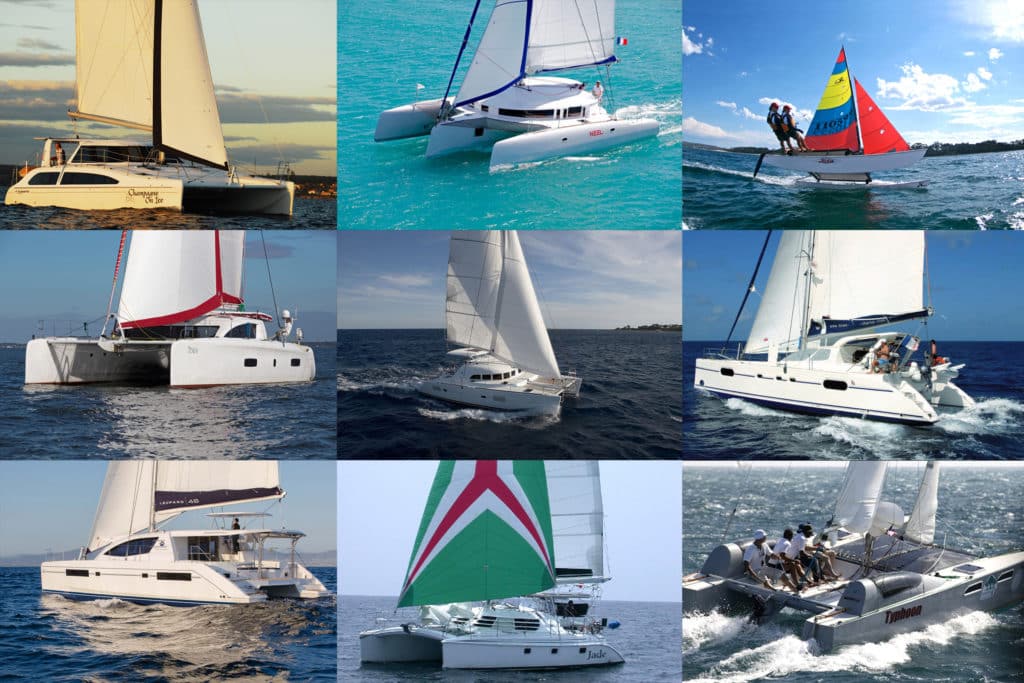
Cruising catamarans have been around for decades, but early models—often plywood and fiberglass vessels built by their owners from plans and kits, kept the boats on the fringes of mainstream sailing. That all changed, though, as big roomy cats were discovered by sailors who went off to charter in the Caribbean, where the multihulls proved their worth as comfortable liveaboard and party boats.
Today’s bluewater catamarans roam the globe, carrying families to exotic destinations across the Pacific and beyond. Just as with their monohull cousins, there is no best catamaran. Instead there is a wide variety of designs, ranging from small catamarans that offer the ease of maintenance a couple might enjoy to performance catamarans capable of easily knocking off 250-mile days. Today, the best catamaran brands offer a range of size models and layouts that can be optimized for an owner sailing with family and friends, or for the charter market, where there’s a demand for four, five and even six cabins worth of accommodations.
The most prolific catamaran manufacturers are in France and South Africa where yards include both large-run production builders and niche companies building fewer than 10 boats a year.
The best cruising catamarans offer good load-carrying ability and respectable performance. As with any sailboat , a modern catamaran’s design is a result of compromises. Daggerboards or keels? Galley up or galley down? Spacious owner’s cabin or extra bunks? There are lots of options to choose from—and that’s what makes looking at these sailboats fun!
Here, then is an eclectic A to Z list of some of the best catamarans that have helped shaped the evolution of how we live and sail on two hulls.
Antares 44i
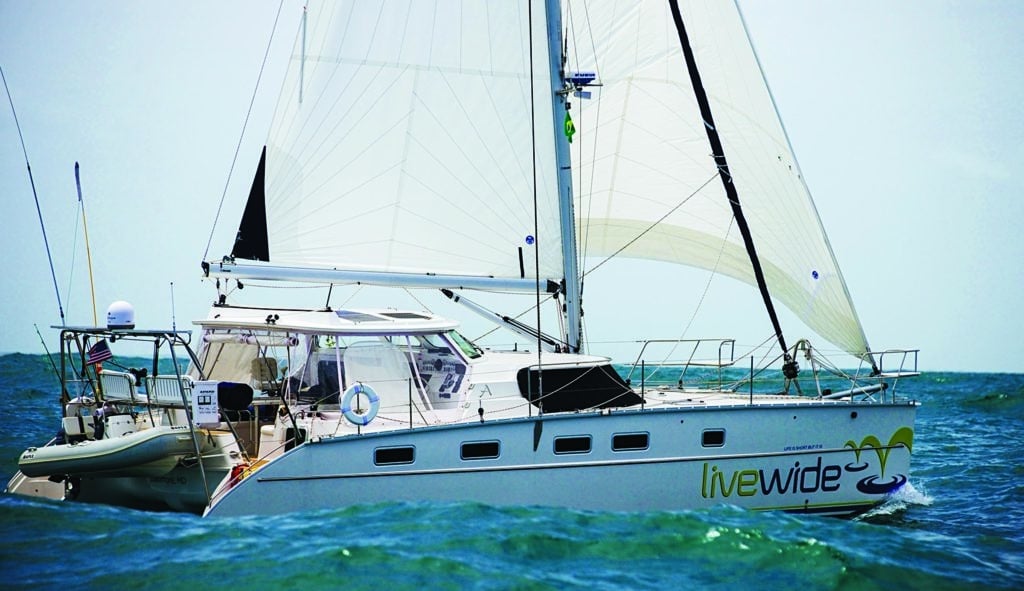
Now built in Argentina as a full-fledged, bluewater catamaran and cruiser that can be safely operated by a shorthanded couple or family crew, the Antares 44i features a fully covered cockpit with a quartet of big, standard solar panels recessed within the hardtop, one example of a yacht capable of long-range passagemaking.
Atlantic 42
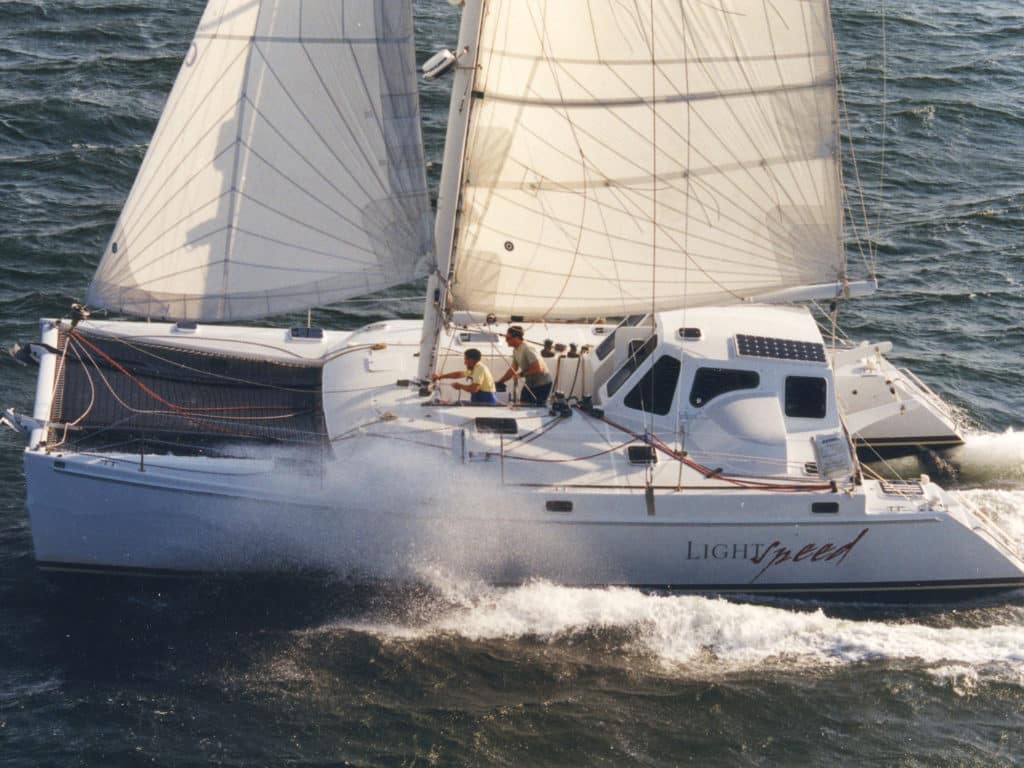
Almost 30 years ago, yacht designer Chris White revolutionized catamaran design with the first in his series of Atlantic cats, the primary feature of which was the innovative mid-ship sailing cockpit forward of the main cabin. The smallest in the Atlantic line, the 42 remains White’s most popular design ever.
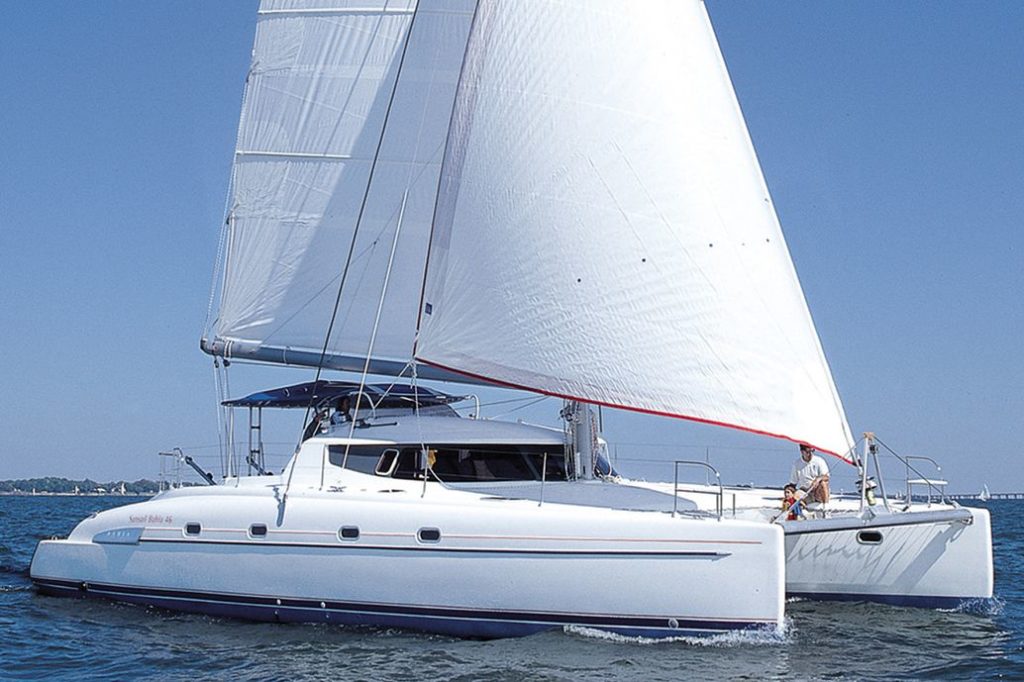
Fountaine-Pajot has built so many outstanding cruising catamarans that it’s difficult to narrow down any single boat, but we’ve always been fans of the good-looking, well-thought-out Bahia 46. At 46 feet, the boat is large enough for offshore forays and has plenty of volume; with its simple but powerful sail plan, it’s also an excellent performer.
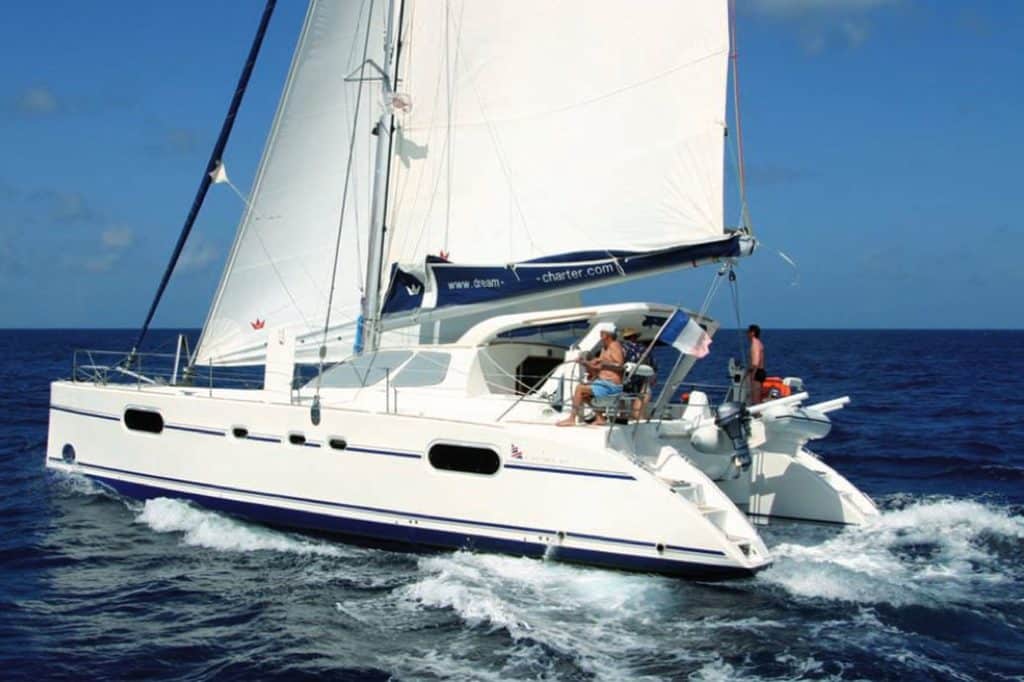
Beginning around 1996, the French builder Catana was one of the first companies to manufacture fully found cruising cats for private ownership, and this Christophe Barreau design, which enjoyed a nearly 10-year production run from 1997-2006, was emblematic of this first generation of safe, fun, long-legged offshore voyagers.
Click here to see more cats from Catana.
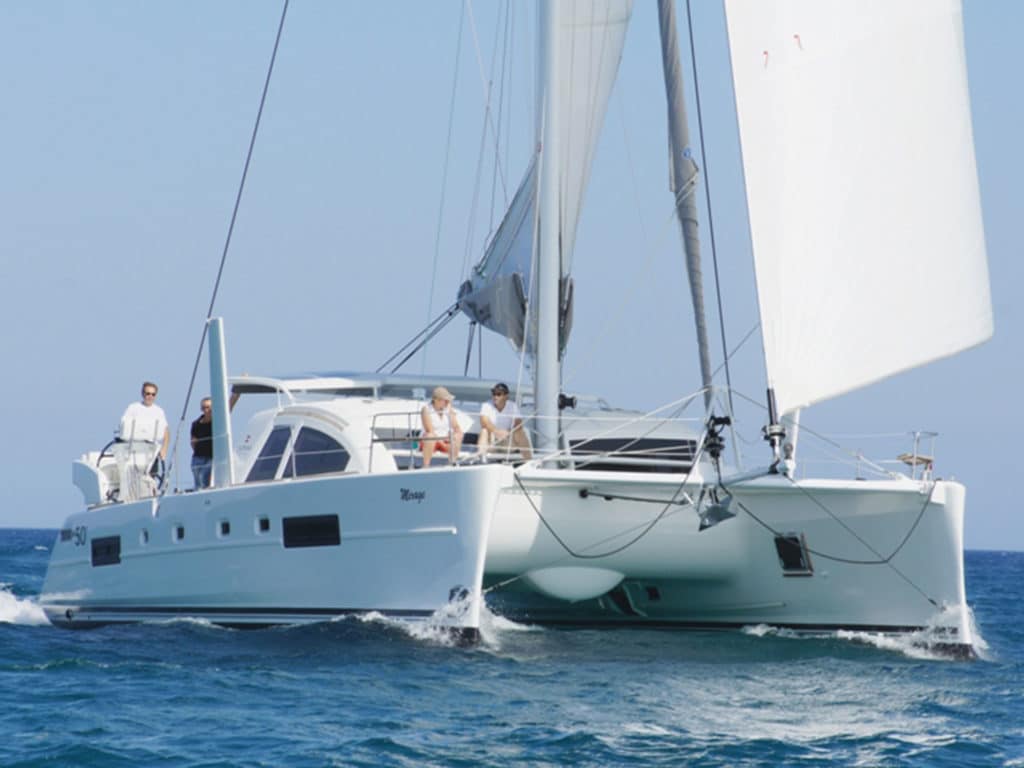
When it comes to speed, light boats are fast ones. And if you wish to save weight, that means exotic modern materials like carbon. Catana now infuses the laminates of their entire production line with carbon fiber, and for this list, we’ve chosen the Catana 50 Carbon, one of the zippiest cats now crossing oceans.
Click here to read about a couple’s charter aboard a Catana 50.
Gemini 105M
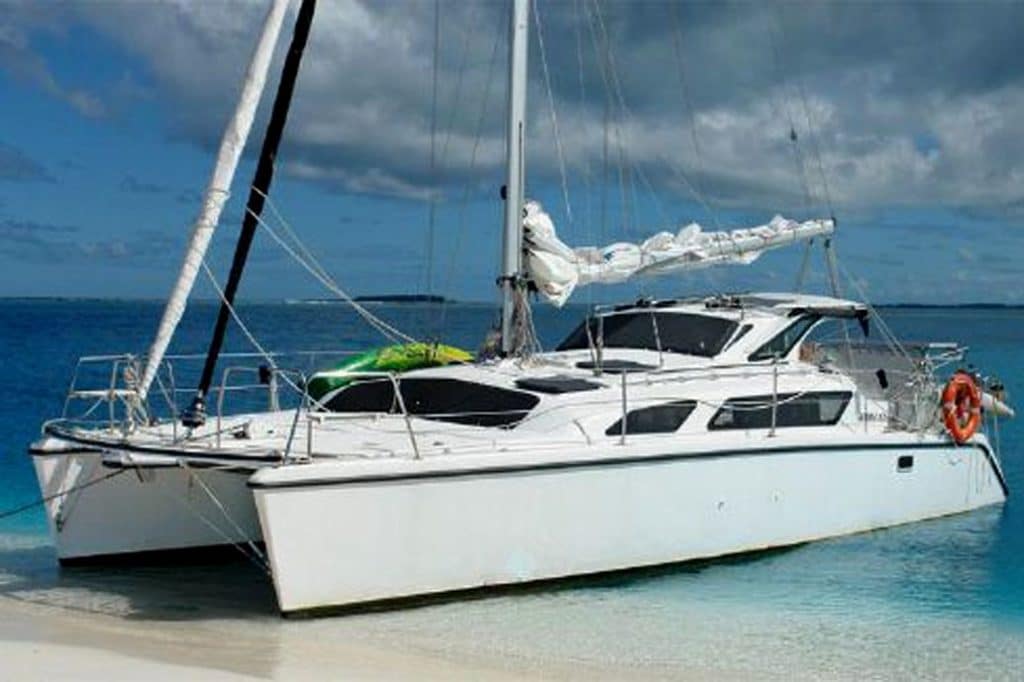
Pioneering catamaran sailor, builder and designer Tony Smith launched the first of his 33-foot Gemini 105M’s (10.5 meters = 33′) in 1993, and soon after found a ready and willing stream of sailors enamored of the boat’s compact size, affordable price tag, and such innovations as the nifty lifting rudder and transom steps.
Click here to read about the Gemini Legacy 35.
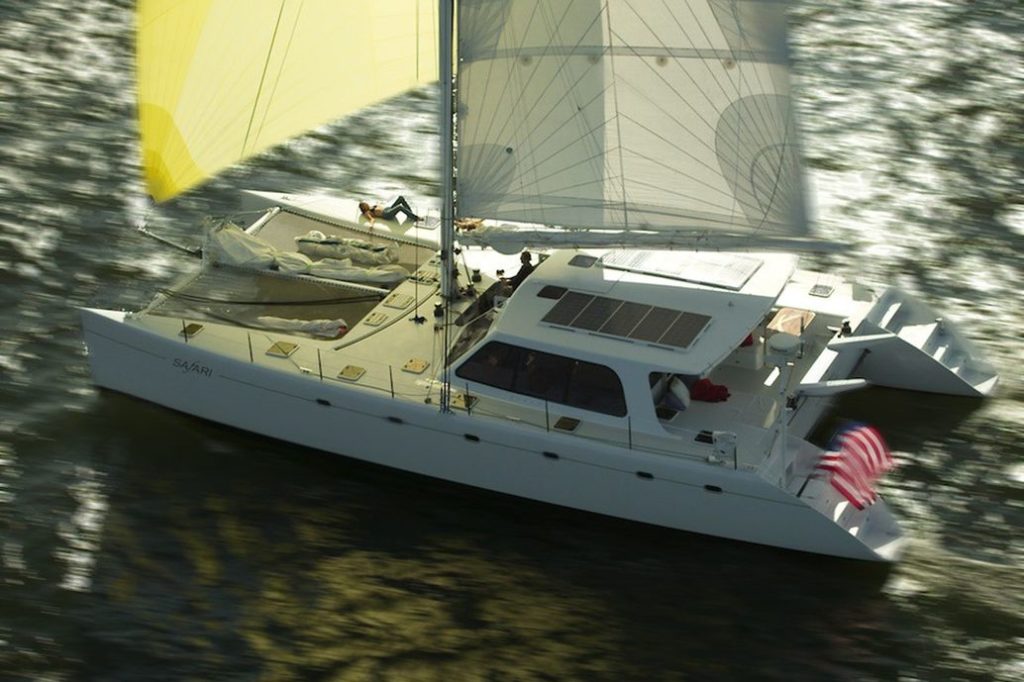
Built between 2000-2005, the Gunboat 62 firmly established the Gunboat brand: go-anywhere cats that applied race-boat technology to a world-cruising platform. Hull no. 1, Tribe, was built for company founder Peter Johnstone, who then spent a year-and-a-half cruising with his family, smiling all the way.
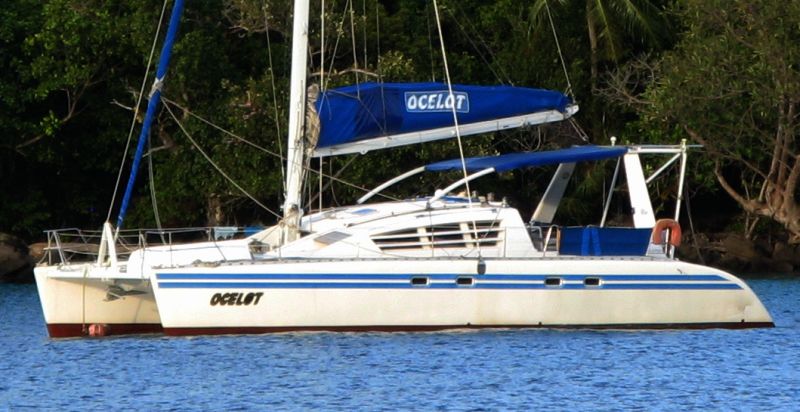
French builder Henri Wauquiez is best known for his long career building monohulls, but the Kronos 45 cat, which he launched in 1992, was ahead of her time. Classic lines, the aft “targa bar” over the cockpit, the louvered coach roof windows, even the distinctive stripes on her hull: the Kronos 45 remains timeless.
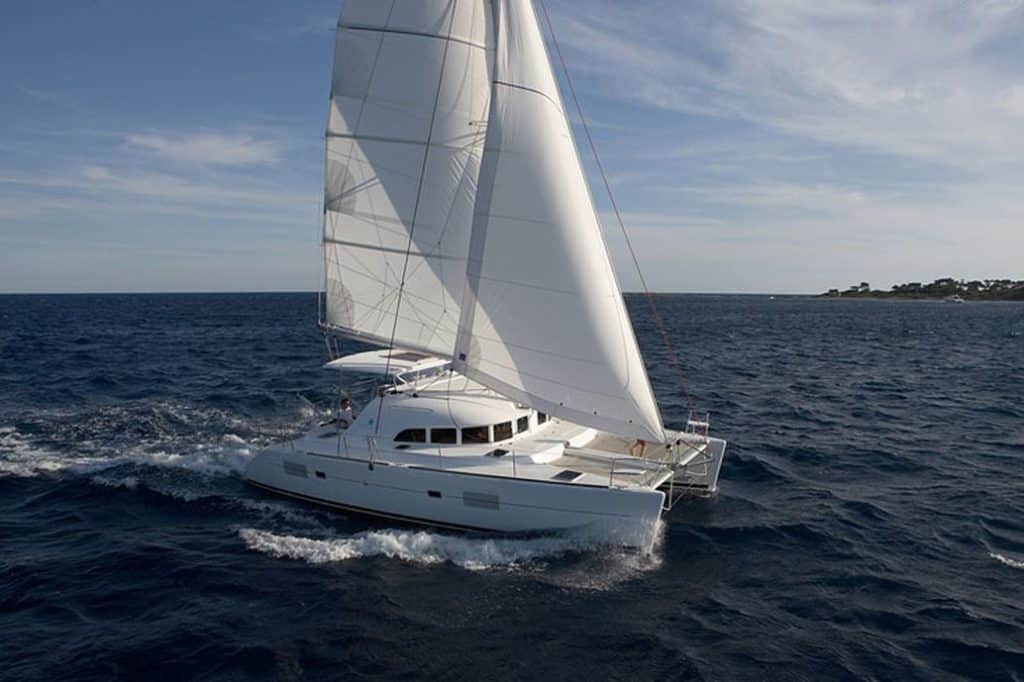
No roundup of cruising cats would be complete without several Lagoon entries, and the best of that impressive bunch might well be the Lagoon 380. Originally launched in 1999, and revered for its combination of quality, volume and performance, with over 740 boats built the 380 is still going strong.
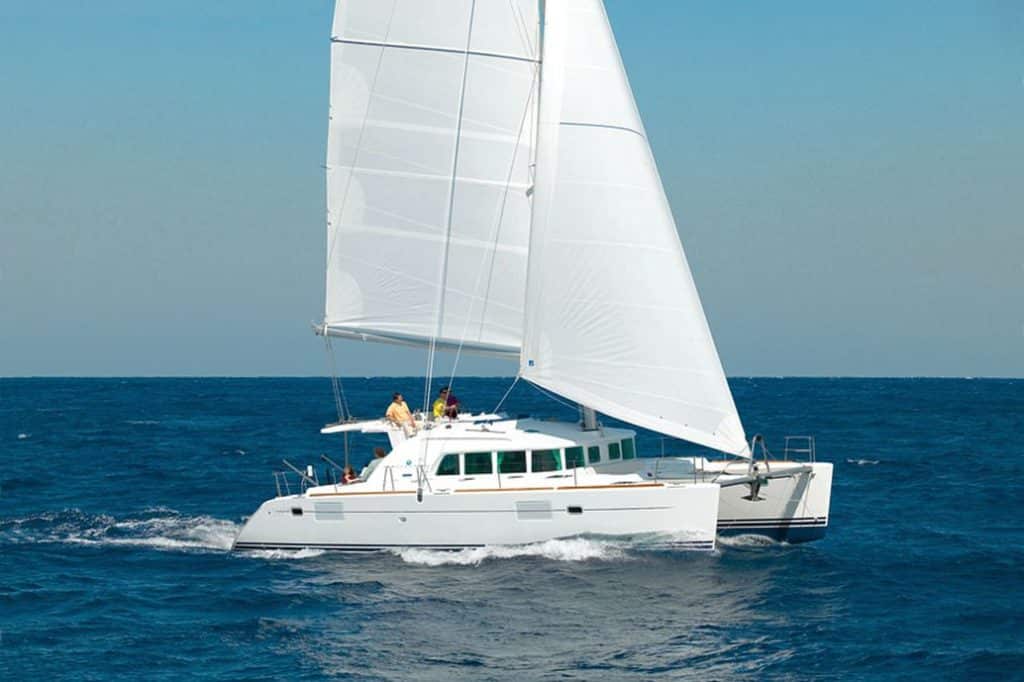
Launched five years after the breakthrough 380, the Lagoon 440 was an evolutionary design that featured a raised flybridge helm station, a unique “gullwing” configuration below the bridge deck, expanded windows in the hull and much more. With 400 boats built in a 6-year production run, the 440 was an unqualified success.
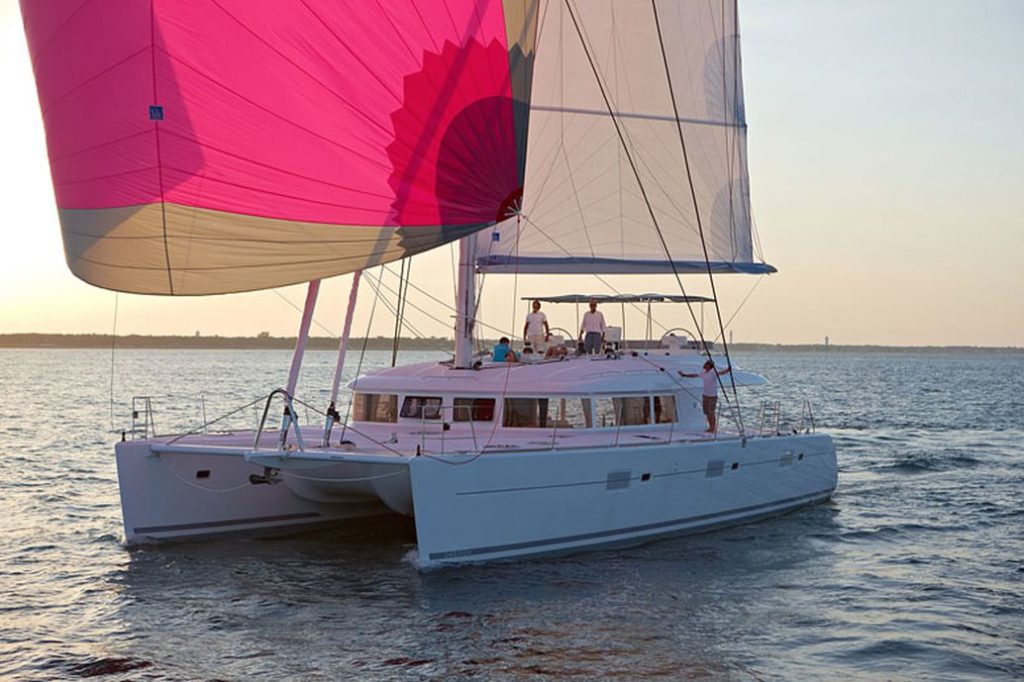
How big can a production cat, still operable by a short-handed crew, really be? The builders at Lagoon discovered that 62-feet hit a sweet spot in the marketplace, and have sold over 70 boats since its introduction in 2010. The centerpiece of this design is the sensational steering station atop the flybridge, with expansive views of the sea and sky.
Click here to see more cats from Lagoon.
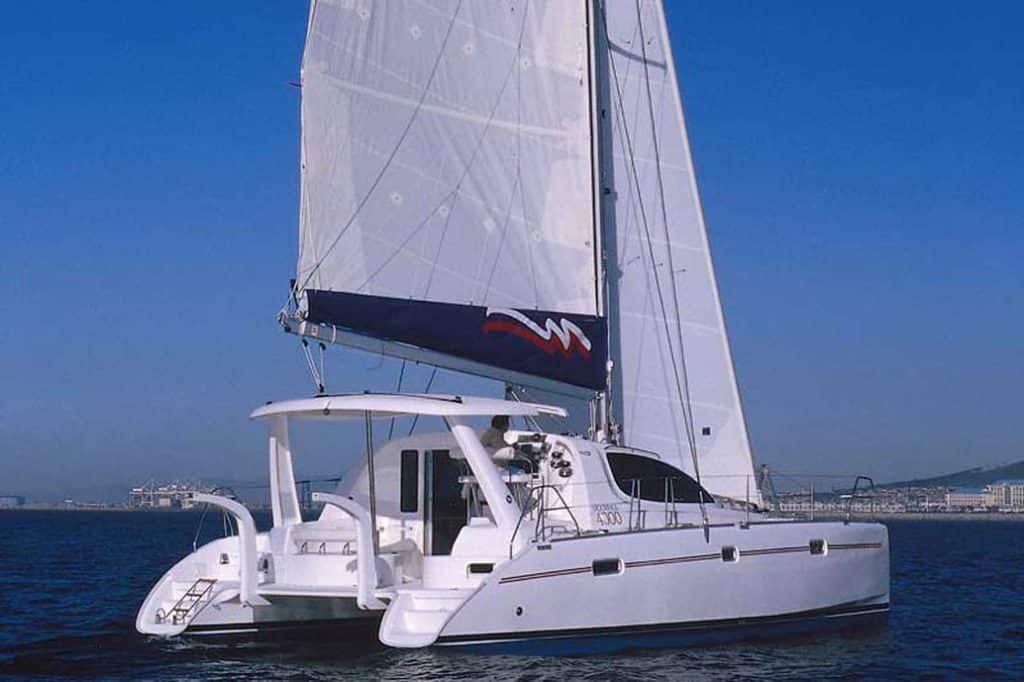
With an unmatched pedigree – designed by premier multihull naval architects Gino Morelli and Pete Melvin, built by the prestigious Robertson & Caine boatyard in South Africa, and commissioned by chartering giant The Moorings – the Leopard 40 was, perhaps unsurprisingly, Cruising World ’s Import Boat of the Year in 2005.
Louisiane 37
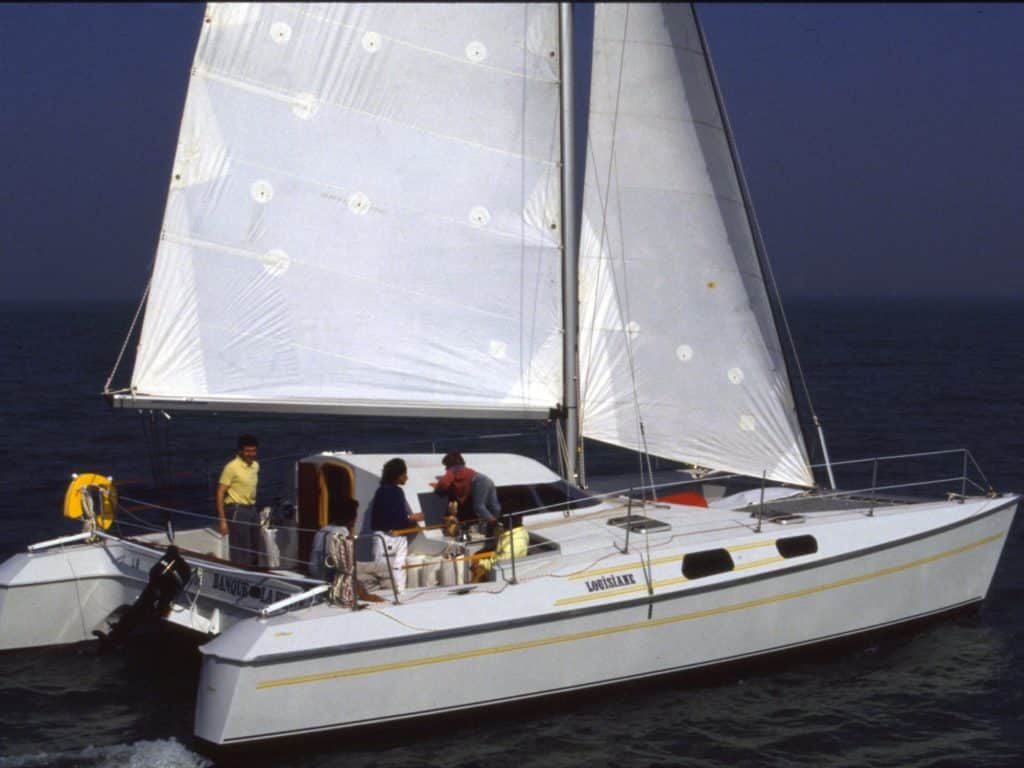
Based on the famous French racing cat Charente-Maritime, the Louisiane 37, designed by Joubert/Nivelt and launched by builder Fountaine-Pajot in 1983, was a light, fast liveaboard cruiser with full accommodations that represented a radical departure from the hefty British cats that preceded it.
Maine Cat 30
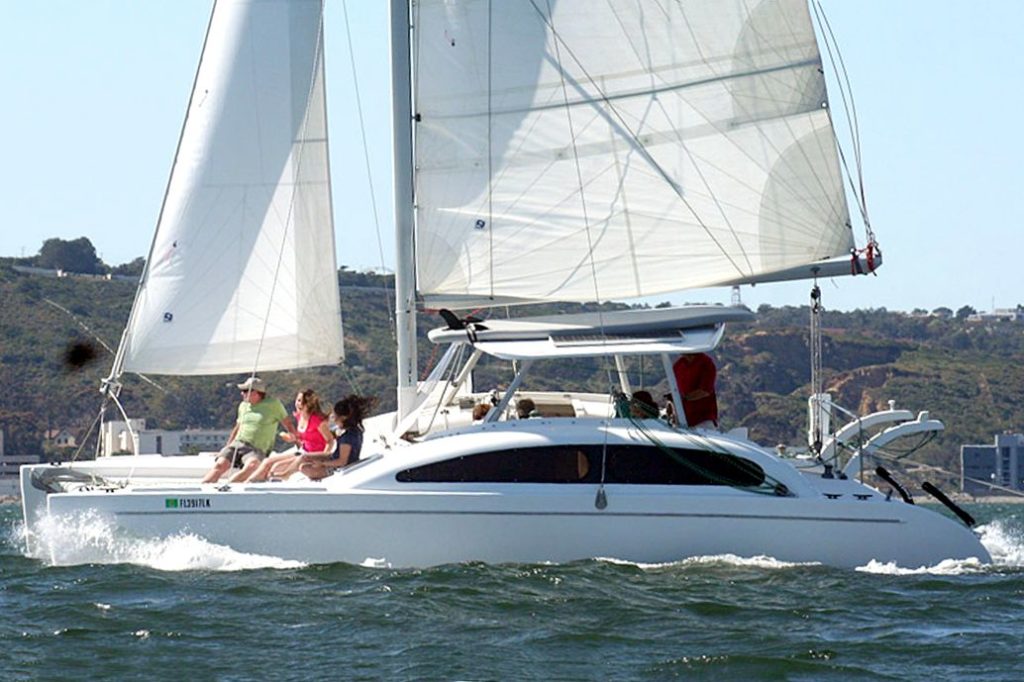
One of the more versatile and clever cats ever created, the central feature of the cool Maine Cat 30 is the open bridge deck/living room sandwiched between the hulls and canopied by a rigid, permanent hard top (the comfortable accommodations/ staterooms are stationed in the hulls). Ideal for a winter in the Bahamas but with the ability to sail offshore, it’s a boat for all seasons and reasons.
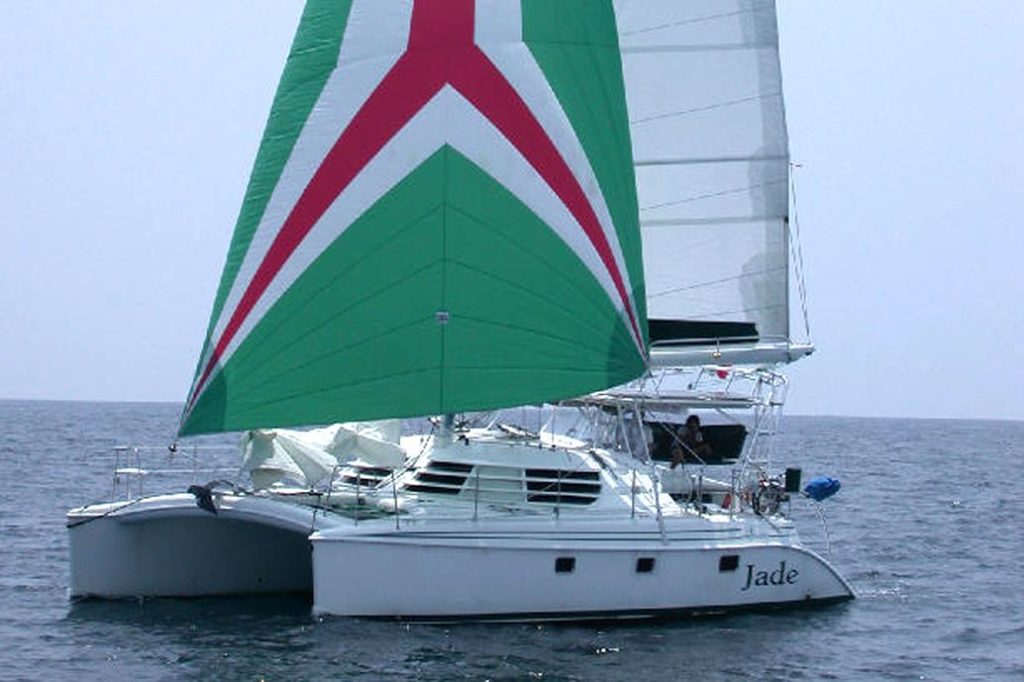
Built in Florida and beloved by the owners of the over 120 boats built during the company’s existence from 1993 to 2009, the Manta Catamarans range included 38-, 40- and 44-foot cats. For this exercise, however, we’re heralding the original Manta 42, which won the Best Value Overall prize in CW’s 2001 Boat of the Year contest.
Moorings 4800/Leopard 48
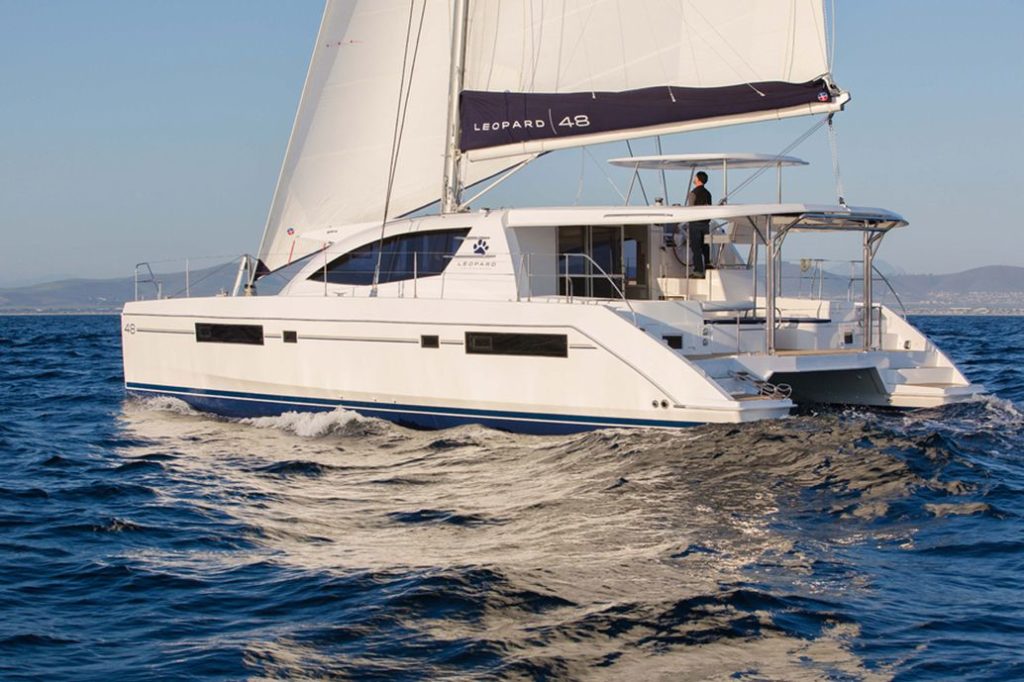
Another Leopard/Moorings collaboration built by the wizards at Robertson & Caine (though this boat was designed by fellow South African Alex Simonis), the Leopard 48 was another CW Boat of the Year winner with all the contemporary bells and whistles: forward cockpit, flybridge helm station and solid hardtop dodger, just to name a few.
Click here to read more about the Leopard 48, and click here to see more images.
Nautitech 441
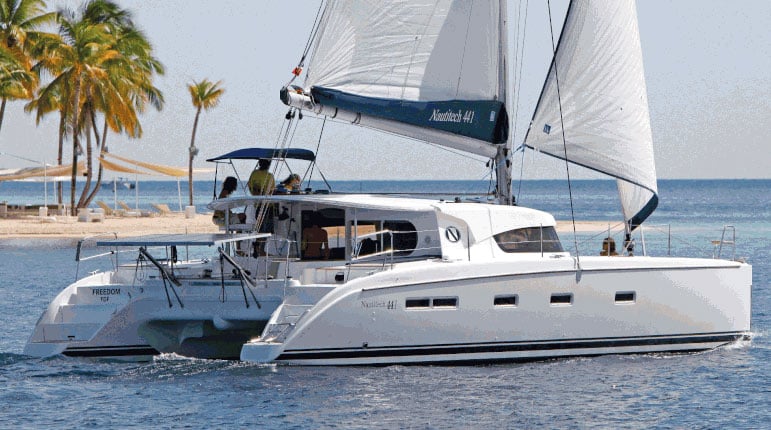
The Best Multihull Under 45 Feet: So said the CW judging panel in the 2013 Boat of the Year competition, regarding the Nautitech 441. But what makes this versatile platform so intriguing are the different helm set-ups. The 441 employs a single wheel, to starboard, ideal for solo sailors, while the 442 has a pair of helm stations aft.
Click here to see more Nautitech Catamarans.
Outremer 5X
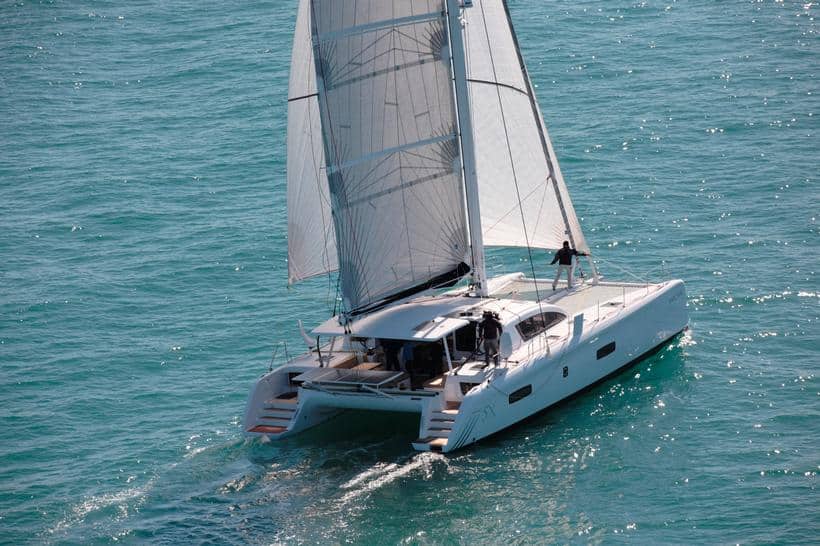
A state-of-the-art all-oceans cat that exemplifies how far multihull design has come, the 59-foot Outremer 5X was a winner on both sides of the Atlantic, taking top honors in the European Boat of the Year competition in 2013, and following up as the Best Full-Size Multihull in CW ’s contest a year later.
Click here to see more cats from Outremer.
St. Francis 50
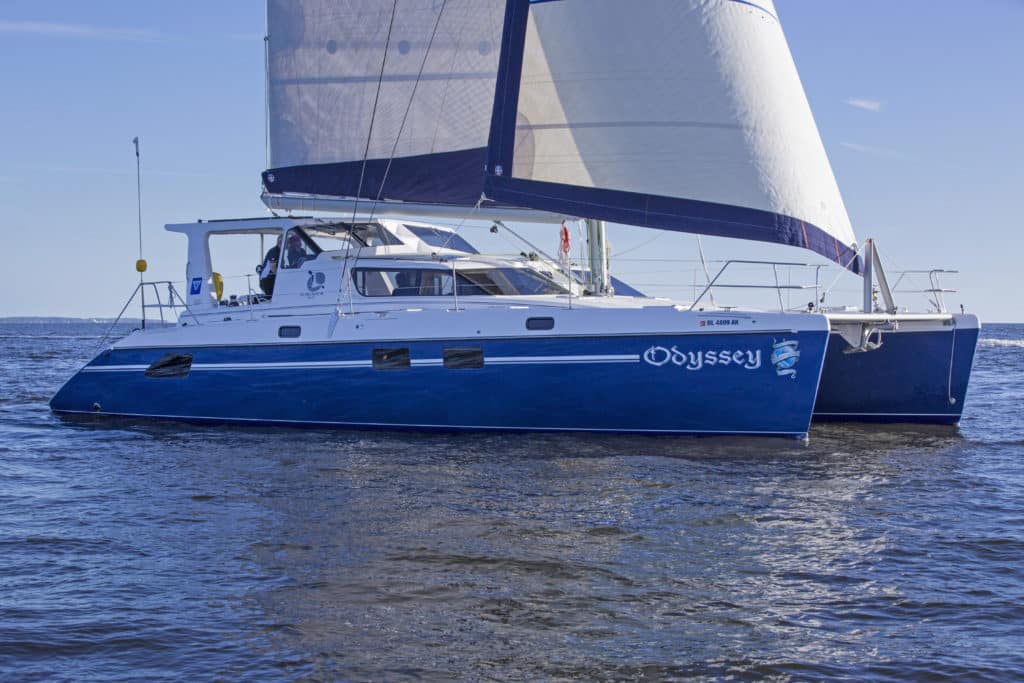
The flagship of the proud St. Francis line – built in South Africa since 1990 to designs by local legends Lavranos Marine Design – the St. Francis 50 is another “luxury cat” that shares much in common with an earlier 48-foot sister-ship, but packs even more payload into its roomier lines.
Click here to read more about the St. Francis 50
Seawind 1000
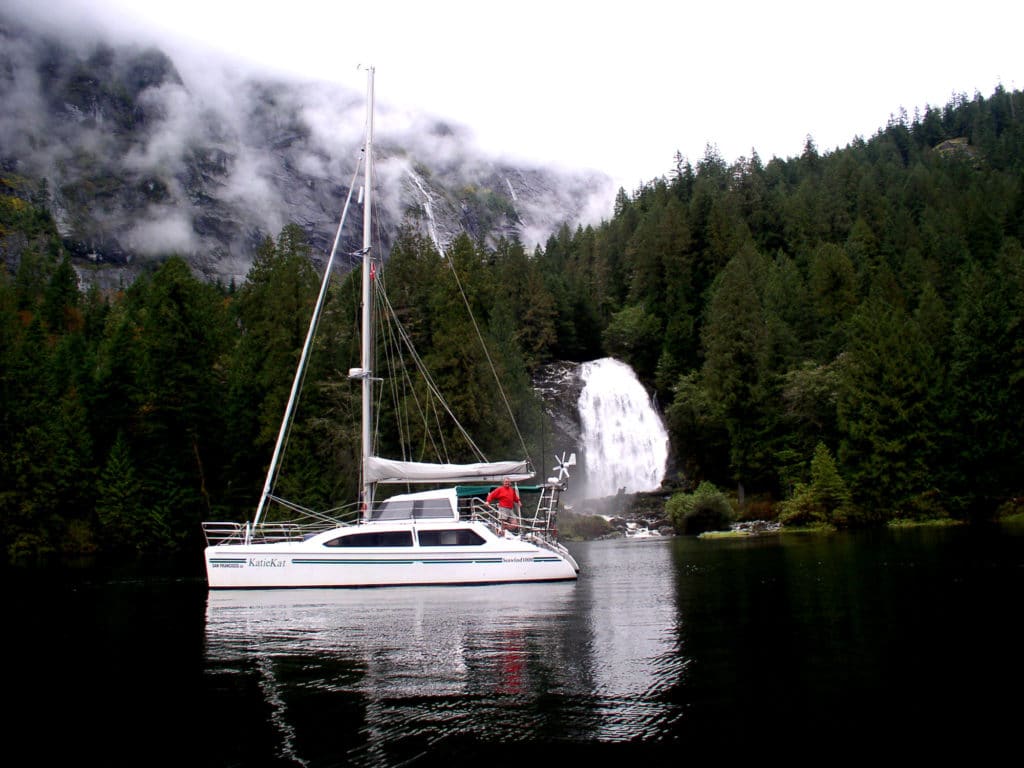
Founded by Aussie surfer and sailor Richard Ward in 1982, the 33-foot Seawind 1000 is easily the most popular cruising cat ever built in Australia (the company has since moved its manufacturing and management operations to Vietnam). Roomy and airy, these cats dot the coastline of eastern Oz.
Seawind 1160
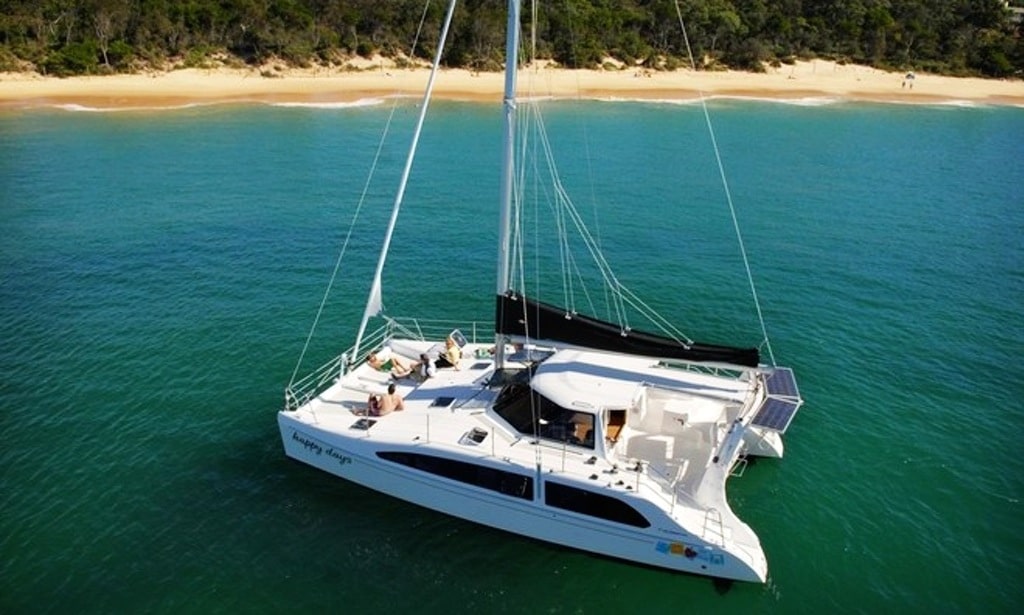
If the Seawind 1000 was a minimalist approach to cruising cats, the 38-foot Seawind 1160 is the flip side of the coin, a full-fledged long-range voyager. Among the reasons it was named CW ’s Most Innovative boat for 2007 is the unique “tri-folding” door that stashes overhead to open up the saloon and cockpit into a spacious living area.
Click here to read more about the Seawind 1160.
Sunsail 384
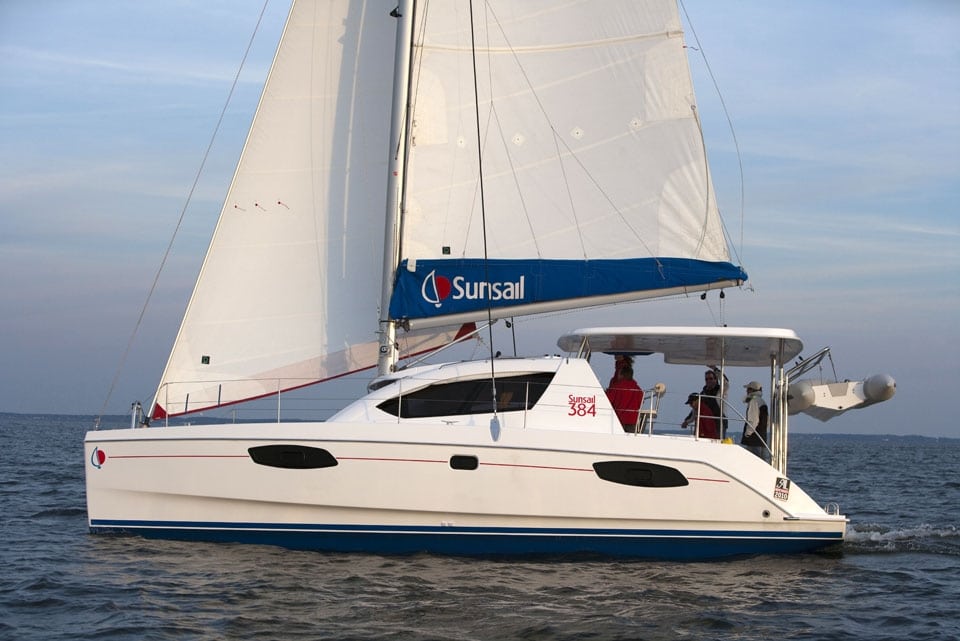
Every sailboat is a compromise, and in the case of the Sunsail 384 (also sold privately as the Leopard 38) that’s a good thing, because designers Morrelli & Melvin and builder Robertson and Caine got the balance just right with this relatively small catamaran. With four cabins, the 384 can carry the same size bareboat charter crowd as her larger siblings, but does so with a decided bounce in her step. Named CW’s Import Boat of the Year in 2010, you can gauge the success of the design by the grins on the crew as they barrel down Sir Francis Drake channel in the British Virgin Islands.
Victoria 67
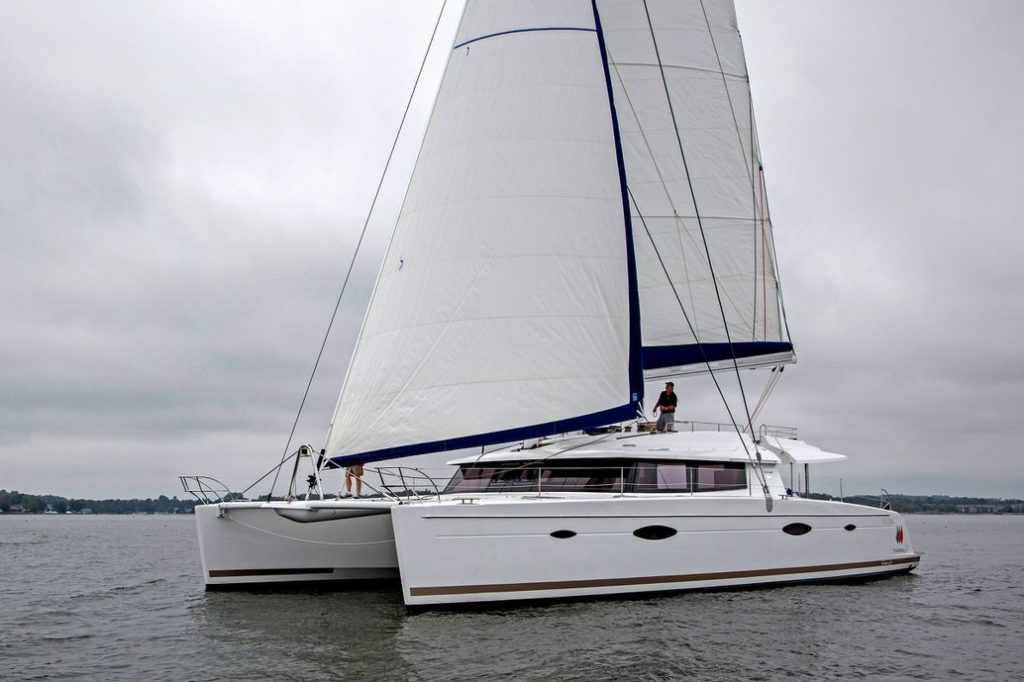
The French design office of Berret Racoupeau drafted the lines of Fountaine-Pajot’s new flagship, introduced in 2013, a magnificent world-girdling voyaging catamaran. Like other giant cats launched in recent years, the boat features a sensational upper deck with all sail controls, helm and lounging stations.
Click here to see more images of the Victoria 67.
Wharram Tanaroa
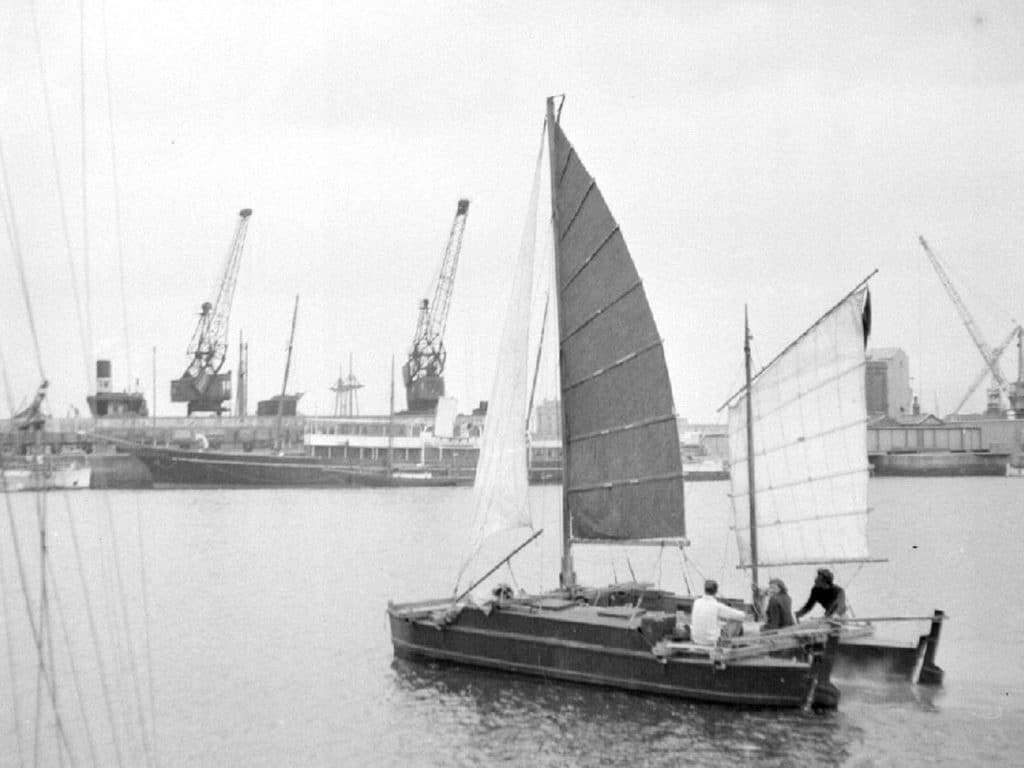
No list of influential multihulls would be complete without the work of James Wharram, and while Tangaroa wasn’t a production cat by any means, it showcases the British designer’s respect for ancient Polynesian craft. Wharram sailed this 23-foot-6-inch “double-hulled canoe” across the Atlantic in the 1950s, and sold countless plans for similar boats for decades afterwards.
- More: Boat Gallery , catamaran , multihull , Sailboat Reviews , Sailboats
- More Sailboats
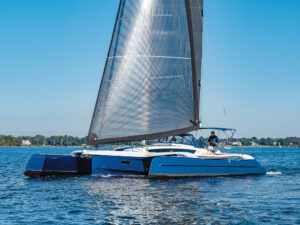
Sailboat Review: Dragonfly 40

Elan Impression 43: A Family-Friendly Cruiser with Serious Sailing Performance

Cruising World ’s 2025 Boat of the Year Competition

2025 Boat of The Year: Best Overall
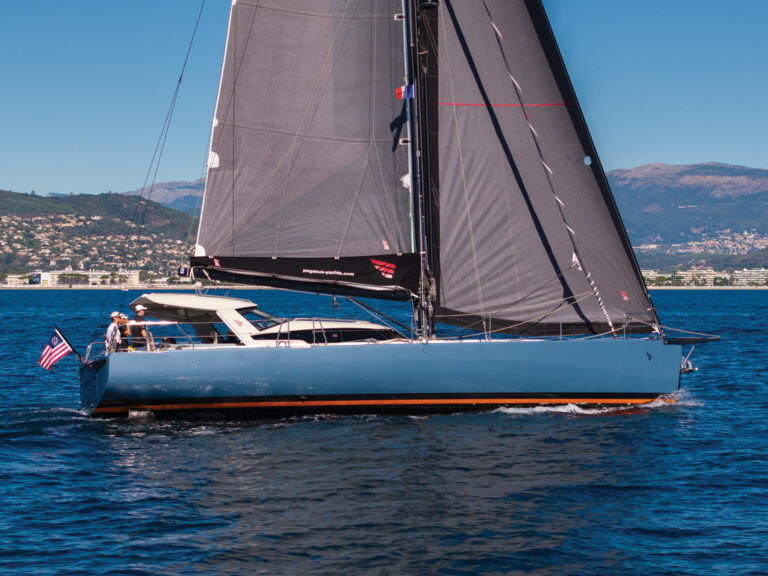
Cruising with Confidence: How Modern Boats Are Measuring Up
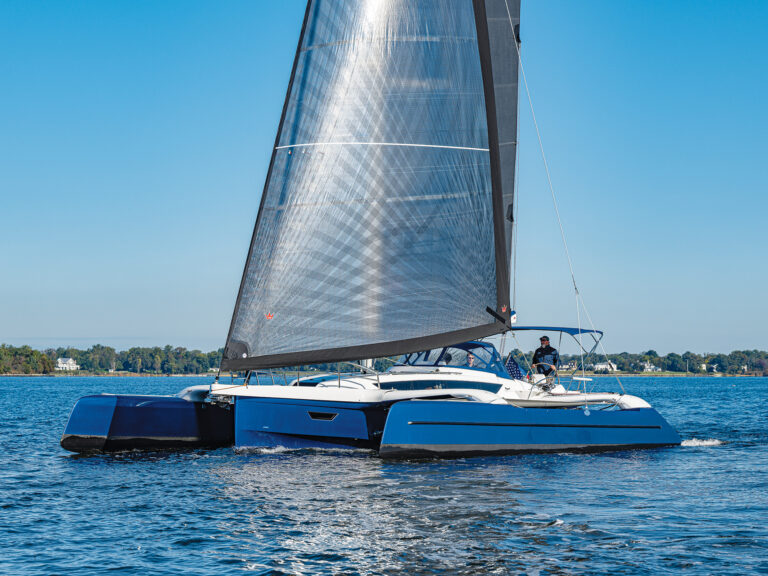
Sailor & Galley: Easy Pink Aioli Dip

Reefs at Risk: How Cruisers Can Champion Ocean Conservation
- Digital Edition
- Customer Service
- Privacy Policy
- Terms of Use
- Email Newsletters
- Cruising World
- Sailing World
- Salt Water Sportsman
- Sport Fishing
- Wakeboarding

IMAGES
COMMENTS
Sailing catamarans can be outfitted with high-tech navigation and radar systems, fish finders, auxiliary power outlets, generators, and premium rigging systems for better sailing. Models that include a cabin will also find plenty of optional cabin upgrades, including seating, marine appliances and electrics, bedding, and other living space ...
Catamaran sailing vessels are assembled by a wide variety of boat manufacturers with hull types including catamaran and monohull designs. These sailboats have a minimum total sail area of 95 square feet, a maximum total sail area of 3,630 square feet and an average of 940 square feet.
Dec 28, 2023 · Recently named the "Boat of the Year" for 2019 by Cruising World Magazine and Sail Magazine, the Elba 45 is the latest model in the incredible line of Fountaine Pajot catamarans. This boat was designed to replace the outgoing Helia 44 and stands to be one of the most popular catamarans with Fountain Pajot having sold over 100 Elba 45 hulls long ...
The Best Catamarans for Sailing Around the World A catamaran is a double-hulled boat with a deck or cabin area in between (bluewater cat definition in this article).The double hull design means that the boat rocks less, sits higher on the water, uses less fuel to sail, and can be sailed in shallower waters than a single-hulled boat without worrying about grounding.
Sep 17, 2024 · Fountaine Pajot, one of the foremost builders of sailing catamarans, unveiled their biggest “Super Catamaran” ever: the Thira 80. The release comes on the tail of an ever-increasing trend in the catamaran market—the bigger-the- better era. With Sunreef, Lagoon, and Gunboat all making boats in the 70 to 80-foot range, these companies ...
Here are the most common kinds of catamaran boats and their uses. Sailing Catamaran. Sailing catamarans are probably what you think of when you hear the name. Sailing catamarans are sailboats with two identical hulls connected by a center deck. The largest sailing catamarans are spacious and stable vessels that are capable of serious offshore ...
Aug 15, 2024 · A catamaran is a boat that measures under 78ft in length and features two hulls of the same size. While usually in the model of sailing catamarans or power catamarans, they can either be propelled by sail, or motor, or a combination of the two. Even if you have a sailing catamaran, you will usually have a small engine to help during days of ...
Jul 1, 2021 · Gemini 105M Courtesy of Gemini Catamarans. Pioneering catamaran sailor, builder and designer Tony Smith launched the first of his 33-foot Gemini 105M’s (10.5 meters = 33′) in 1993, and soon after found a ready and willing stream of sailors enamored of the boat’s compact size, affordable price tag, and such innovations as the nifty lifting rudder and transom steps.
Apr 14, 2022 · What Are Sailing Catamarans. Sailing catamarans are sailboats which have two hulls rather than one. There are also some sailboats out there with three hulls, but these are called trimarans. Beyond that there aren’t any additional defining factors. If a boat has two hulls and can be propelled via a sail, it counts as a sailing catamaran.
Apr 15, 2022 · A sailing catamaran harnesses the power of the wind for its primary energy source, making it by far the most environmentally friendly boat type. Some sailing boats may include motors, but generally speaking, sailing catamarans only use the auxiliary engines when absolutely necessary (i.e. in ports and marinas, or in an emergency).